










TITLE SPONSOR
Form and Fiber, Inc.
AWARDS LUNCH SPONSOR
Keystone Hardscapes
KEYNOTE SPONSOR
Landscape Structures
CLASSROOM A SPONSOR
Belgard Commercial
CLASSROOM B SPONSOR
The PlayWell Group
CLASSROOM C SPONSOR
SYNLAWN
TOTE BAG
ArborStakes ™
LANYARD SPONSOR
Form and Fiber, Inc.
CONFERENCE ONLINE PROGRAM (ISSUU)
PUBLISHER: TxASLA
CONFERENCE MOBILE APP
NAME: Yapp App
EVENT CODE: INNOVATE23
WELCOME RECEPTION SPONSOR
BrightView Landscape Development, Inc.
WELCOME RECEPTION and TOUR TRANSPORTATION
SPONSOR
Living Earth
MOBILE APP
ArborStakes ™
SILENT AUCTION
MOBILE APP
Omega II Fencing Systems
PEN
BJ’s Park & Recreation Products
Tree Frog
PLANT DONATION
Superscapes Landscape and Irrigation
PAGE: Texas ASLA
HASHTAG: #TexasASLA2023
HANDLE: @TEXASASLA
HASHTAG: #TexasASLA2023
HANDLE: @TEXASASLA
HASHTAG: #TexasASLA2023
CHAPTER WEBSITE
texasasla.org
Landscape Architecture as art and science (both in professional practice and academia) is deeply and firmly rooted in creativity and innovation. Additionally, the complex relationship between people and the natural world, especially in our rapidly urbanizing Texas landscape creates challenges with growth, justice, scarcity, and climate change. The theme “Innovate” is examining the innovative practices (environmental, social, economic, cultural, or aesthetic) of landscape architects, coupled with ideas, experiences, processes, and products to help solve these current challenges that we face. The 2023 conference plans to address how innovative ideas of landscape architects can shape, transform, and adapt to a changing natural and built environment.
Greetings and welcome to Fort Worth! It is an honor to serve as the Texas ASLA Chapter President and officially welcome you to this year’s conference. Fort Worth has a long history and has grown into a modern city embracing art, culture, and family values. It has evolved into a city that embraces the future, while demonstrating respect for the past. I encourage you to explore the gardens, museums, and public spaces of Fort Worth during your visit.
The theme of this conference is INNOVATE. The Cambridge Dictionary defines Innovate as a verb: to introduce changes and new ideas. This phrase uniquely captures the moment of time in which we are living. We, as landscape architects are introducing changes and new ideas that can profoundly affect the future of our world. We are the pioneers of new methods, materials and systems that have the potential to improve the lives of all living things. The conference sessions provide examples of innovation in areas ranging from an introduction of landscape architecture in primary education to community engagement that creates sustainable stormwater infrastructure for a local garden and much more. I am confident you will find inspiration, motivation and discover something new in the conference sessions.
The Texas Chapter is embracing change and new ideas by kicking off a strategic planning initiative to better organize the chapter and five sections to work together to meet local, state, and national goals. This multi-month initiative will encourage leaders to aspire to lofty goals. During the process we will discover novel ways to collaborate and solve problems. This is also an opportunity to evolve our business, the business of promoting landscape architecture. We will become a nimble organization, able to react to change around us and embrace uncertainty. Our chapter is the largest in the nation based on number of members and this scale will allow us to have an increased influence on issues related to our profession. We propose to extend our influence through thoughtful collaboration with
allied professions. Innovation is required for us to solve the challenges of climate change and social issues. I encourage you to embrace change and make innovation a part of the way you live and work.
An event like this takes months of meetings and phone calls to plan. Please join me in thanking the conference committee co-chairs, Gabriella Weber and Will Jones, along with a team of volunteers. A big Texas thank you to Texas ASLA Executive Director, Jennifer Fontana, for coordinating, scheduling and taking care of all the details. Finally thank you for your attendance; participation is the process that allows us all to learn, grow and ultimately innovate.
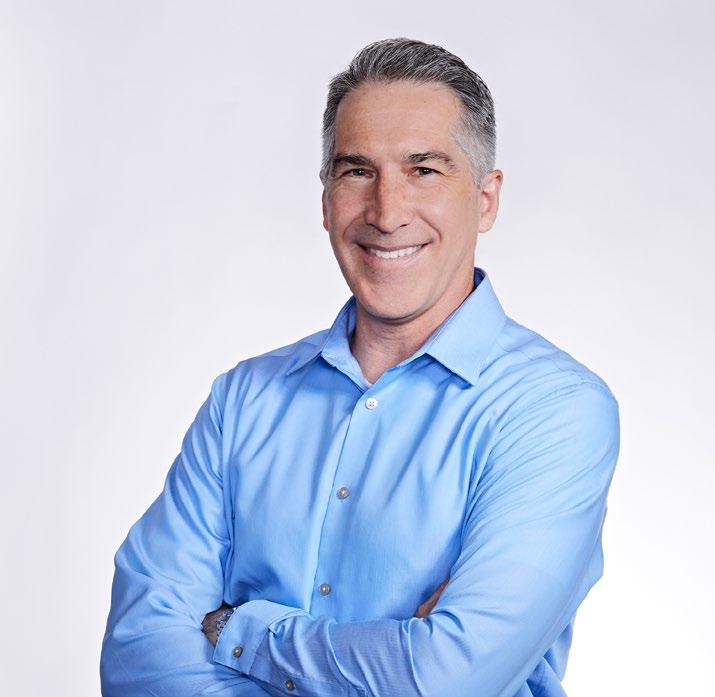 TEXAS CHAPTER PRESIDENT
TEXAS CHAPTER PRESIDENT



Download the official Texas ASLA Conference Mobile App to view the conference schedule, locate exhibitors and more.

Install Yapp App from the Android or iOS app store.
Open and select “add existing app” and type in INNOVATE23
https://my.yapp.us/INNOVATE23
The Fort Worth Botanic Gardens and Research Institute
3200 Botanic Garden Boulevard
Fort Worth, TX 76107
April 25, 6:30-8:30pm
Parking available or Bus available leaving from Hilton Fort Worth every 30 minutes
Sponsored by BrightView Landscape Development, Inc.
Hilton Fort Worth
815 Main Street
Fort Worth, Texas 76102
Hampton Inn & Suites
1001 Commerce Street
Fort Worth, TX 76102
All proceeds go towards the TX ASLA endowments held at the four University Landscape Architecture programs within the state of Texas.
On your mobile device, open your camera and point it at the image below to go to the Auction Catalog:

Your badge will be scanned before each session to track attendance. Use the link provided to download your CEU Certificate:
https://www.expobadge.com/certification/ASLA2023
Log in with the email address used when you registered for the conference. You can save the file to a .pdf document, or print the certificate for your records. The site will be live 24-hours post-conference.
You have until April 25, 2024 to download your conference transcript and certificate.
Or go to www.silentauctionpro.com and enter group number 3583.
To start bidding, provide your credit card information on the secure network in advance. Your card will not be charged until you authorize the charge.
Bidding begins Wednesday, April 20th at 8:00 am and closes Thursday, April 27th at 11:15 am
The conference program can be found online and includes important information such as detailed session summaries, speaker information, vendor information, and sponsorships. It can be found at the link below or accessed by the following QR code:
https://issuu.com/txasla/docs/conference_program
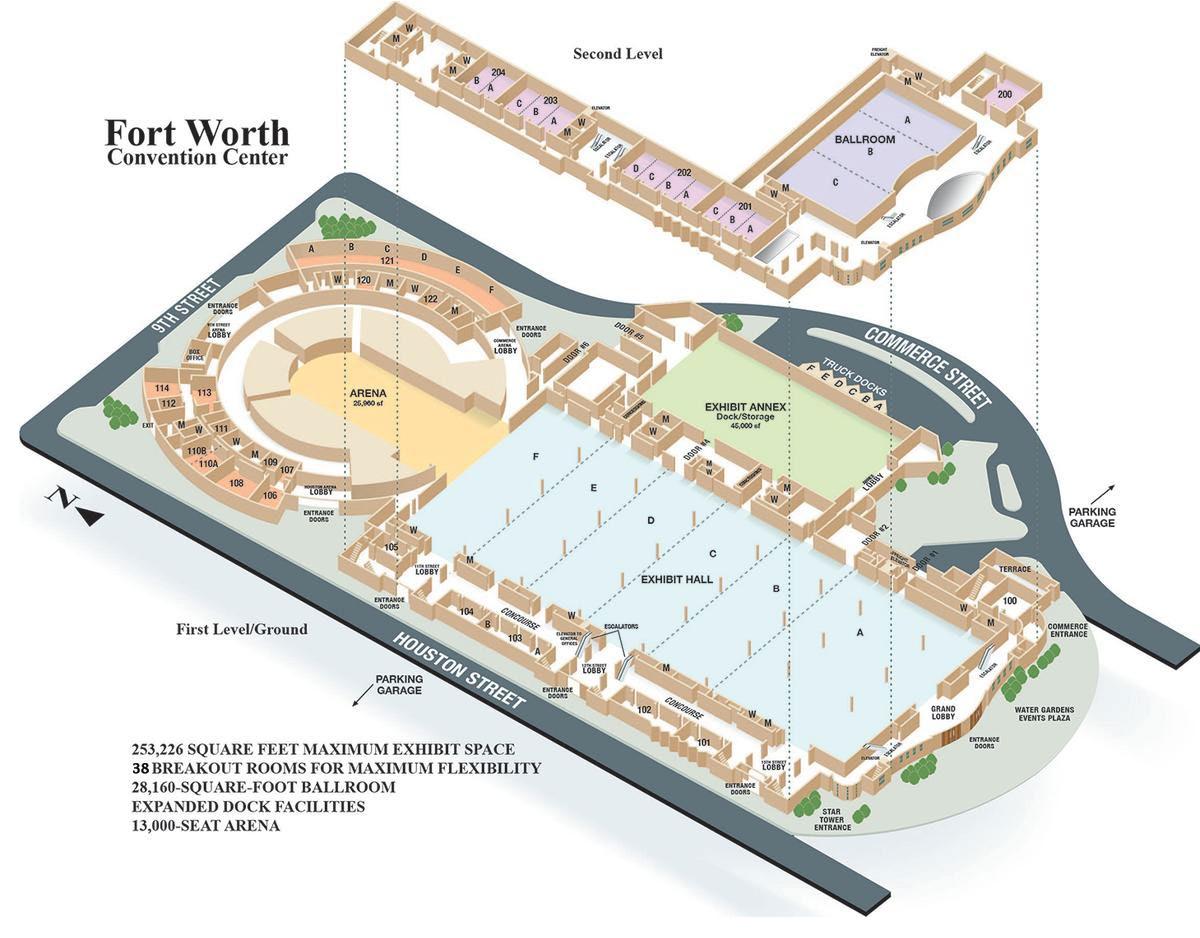
CLASSROOM A
CLASSROOM B
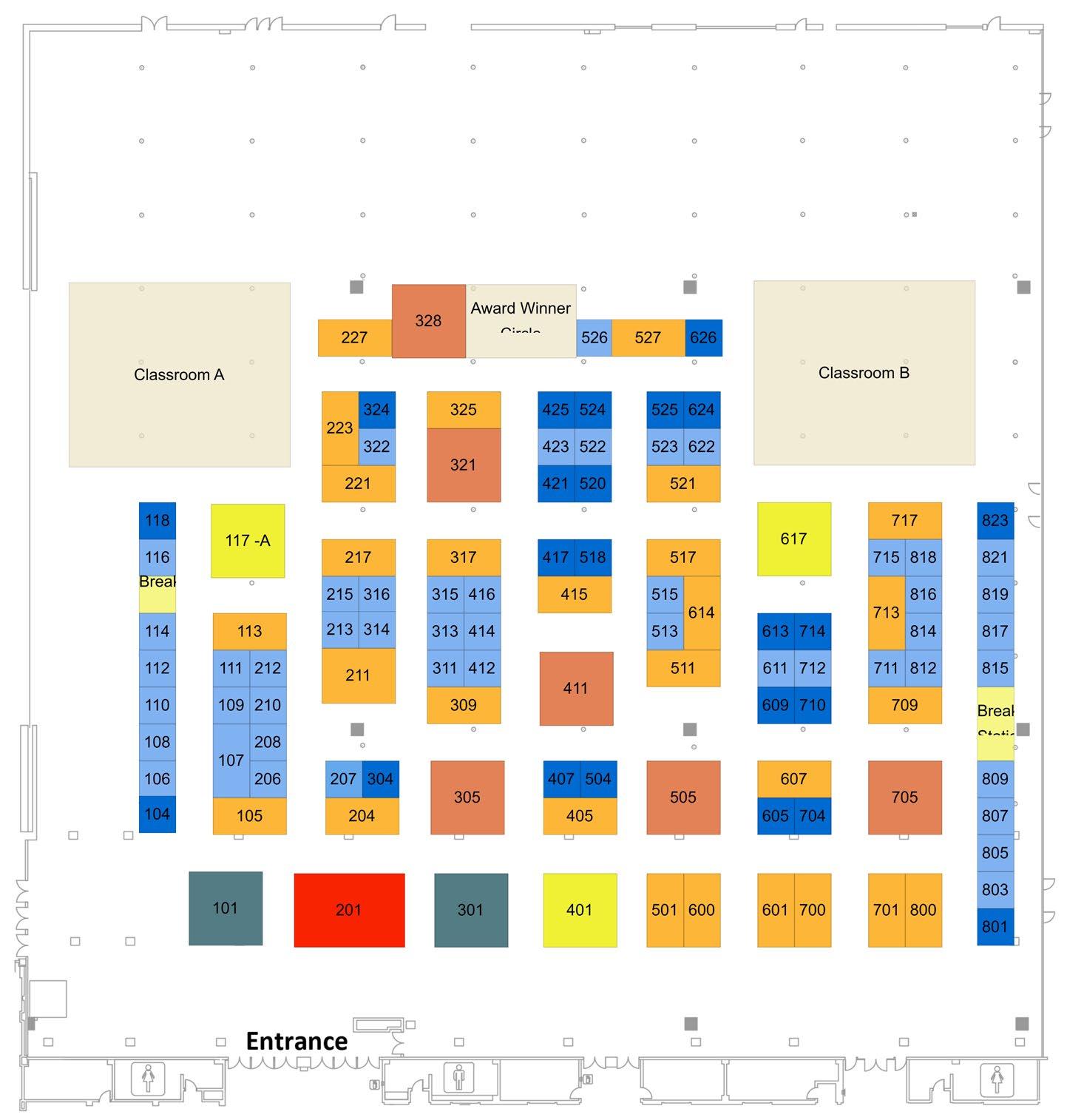

ALAMO STONE COMPANY
Alliance Designer Products
Anova Furnishings
ArborStakes™
Arcosa Lightweight
ASL Stone
Austin Wood Recycling
AZPECTS USA
Bartlett Tree Experts
Belgard Commercial
BJs Park and Recreation Products
Brightview Landscape Development
BV Associates
Cedar Irrigation Design
CH Products LLC
Civano Growers
Clean Scapes Landscaping
Coldspring
CONTECH
CorWorth / Restroom Facilities Ltd.
COVER Timberworks
Cunningham Recreation / GameTime
Cyclone Lighting
Deco Planters
Diane Collier Group
Earthtones Design, Inc.
Environmental Design Inc.
Equiparc
Everde Growers
EverGro Organic Recycling
ForeverLawn Texas
Form and Fiber
Forms+Surfaces
fun abounds
GCP Applied Technologies
Green Theory Design
Greenrise Technologies
Hart Concrete Design
Hunter Industries/FX Luminaire
Metalco
IMG
inCon-trol Water Systems
Invisible Structures
Iron Age Designs
iZone Imaging
James Pole Irrigation Consultants
Junction Landscape & Construction
Keystone Hardscapes
Kompan
Kraftsman Commercial Playgrounds & Water Parks
Landscape Forms, Inc.
Landscape Structures Inc.
Lea Park & Play Inc.
Living Earth
LoKo Enterprises
Lone Star Fountains
Longhorn Inc
LONGSHADOW Planters
Madrax/Thomas Steele
Millis Development & Construction
Minick Materials of Texas
Moon Visions Lighting
Mountain States Wholesale Nursery
Native American Seed
NDS
Netafim USA
New Earth Compost
Omega II Fence Systems
O’Neill & Dunbar, Inc
Paul E. Allen Co., Inc.
Pergolas Unlimited Texas
PermaTrak Boardwalk Systems
PPG
Public Restroom Company
QCP
Rain Bird Corporation
Romtec Inc.
Select Trees Enterprises
Shoreline Consulting, LLC
SiteOne Green Tech
SOX Erosion Solutions
SPEC Play
Specified Water Systems LLC
Street Furniture Australia
Bryan Moore
Pedro Alvarado
Paige Martin
Kristopher Brown
Eric Nelson
Gretchen Linn
Bailee Berry
Geoff Whitcher
Joe Keefe
Chris Ebbesen
Kevin Hanes
John Schlesselman
Brian Vavrina
Ken Swenke
Curt Hummel
Nick Shipley
Travis Turgeon
Bryce Kock
Darren Santiago
Hector Garcia
Tony Presenza
Michelle Breakfield
Jason Repak
Suzanne Anderson
Diane Collier
Justin Crocker
Ellen Lewis
Louis Therrien
Andy Bristow
Mark Manny
Nick Pavey
Geri Rademacher
Robert Zielinski Davis
Leigh Walden
Bill McHugh
Greg Sweeney
John Moss
Suzanne Anderson
Preston Swor
Suzanne Anderson
Darrell Plemons
Jesse Wells
Shea Kent
Mark Armstrong
Brad Huckabay
James Pole
Courtney Byrd
Joey Guedea
Derrick Hemmelgarn
Jennifer Egan
Lara Moffat
Trevor Howard
Travis Lea
Paul Tomaso
Louise Kovalski
Stan Carter
Chad Fisher
KAILEE BURGIN
Chantel Pivotto
Tommy Schulte
Tim Shanahan
John Mina
Wendy Proud
Emily Neiman
Joshua Schroeder
Rodney Patton
Suzy Fredregill
Esti Karo
Steve O’Neill
Debra Finch
Robert Hoffman
Fritz Fromherz
William Dauphin
Mike Earle
Anthony Vagas
Garrett Dean
Travis Olson
Josh Lee
Justin Springer
Jim White
Alexis Page
David Yosso
Brittany Driscoll
Suzanne Anderson
bryan@alamostone.com
pedro.alvarado@alliancegator.com
paige@anovafurnishings.com
Kris@ArborStakes.com
eric.nelson@arcosa.com
gretchen@aslstone.com
info@austinwoodrecycling.com
geoff@azpects.com
jkeefe@bartlett.com
chris.ebbesen@oldcastle.com
kevin@bjspark.com
john.schlesselman@brightview.com
brian@bv-associates.com
ken@cedarcad.com
curt@chproductsllc.com
nick@civanogrowers.com
tturgeon@cleanscapes.net
bkock@coldspringusa.com
darren.santiago@conteches.com
hector@corworth.com
tony@covertimberworks.com
michelle@cunninghamrec.com
jason.repak@acuitybrands.com info@spruceandgander.com diane@colliergrouptx.com
jcrocker@earthtonesdesign ellenlewis@treemover.com
louis@equiparc.com> abristow@everde.com mark.manny@magna-flow.com info@tx.foreverlawn.com geri@formandfiber.com
robert.zielinski@forms-surfaces.com
lwalden@fabplaygrounds.com bill.mchugh@gcpat.com
Greg@greentheorydesign.com moss@ecosvs.com info@spuceandgander.com
preston.swor@hunterindustries.com info@spruceandgander.com
bigd@outdoorimg.com
jwells@incontrolwatersystems.com
shea@mkmsales.com
mark@ironagegrates.com
bhuckabay@izoneimaging.com
james@jamespoleirrigation.com
cbyrd@junctionlandscape.com
joeyg@keystonehardscapes.com
DerHem@kompan.com
info@kraftsmanplay.com laram@landscapeforms.com trevorhoward@playlsi.com info@leaparkandplay.com ptomaso@letcogroup.com Lokosales2@gmail.com info@lonestarfountains.com
cfisher@longhorninc.com kailee@longshadow.com cpivotto@madrax.com
tschulte@millis.com
tims@minickmaterials.com info@moonvisionslighting.com wendy@mswn.com info@seedsource.com Joshuaschroeder@ndspro.com rodney.patton@netafim.com sfredregill@newearthcompost.com esti.karo@omegatwo.com steveo@codinc.net info@pauleallenco.com
Sales@PergolasUnlimited.com ffromherz@permatrak.com wdauphin@ppg.vom Mike@publicrestroomcompany.com anthony.vargas@qcp-corp.com gdean@rainbird.com travis.olson@romtec.com jlee@selecttrees.com jspringer@shorelineconsultingllc.com jwhite2@siteone.com alexis@soxerosion.com david@specplay.com alexius@specwater.com info@spuceandgander.com
StreetBond Pavement Coatings
SYNLAWN
Texas Board of Architectural Examiners
Texas Landscape Lighting Sales / Kichler
Texas Nursery and Landscape Assn
The Organic Recycler
The PlayWell Group
The Western Group
Toro Irrigation Unique Lighting
Tournesol Siteworks
Tree Mann Solutions
Tree Stake Solutions
TreeDiaper
Urban Accessories
USA Shade
Vestre
Victor Stanley, Inc.
VIVA Railings / Metal Spaces
Vortex Aquatic Structures International
Wade Architectural Systems
Waterplay
webuildfun, inc.
webuildfun, inc.
We-ef Lighting Wheeler
Whitacre Greer
Wickcraft Company, Inc.
Holley Rounds
TINA PALOMBI
Glenn Garry
Monique Mackenzie
Amy Graham
Pat White
James Robertson
Brian Greenwood
Larry Spain
Catherine LeDuke
Jeff Justice
Jeff Tuley
Hailing Yang
Suzanne Anderson
Michelle Botha
John Patterson
Sharon Ward
Carrie Burke
Matthew Machin
Christy Serafini
Kevin Spence
Kris Allen
Kris Allen
Drew Roberson
Andrew Messer
William Sundquist
Patrick Walters
Holley.Rounds@gaf.com
TINA.PALOMBI@SYNLAWN.COM
glenn.garry@tbae.texas.gov
Monique@TXLLSales.com
a.graham@tnlaonline.org
pat@theorganicrecycler.com
james@playwellgroup.com
livingscreen@thewesterngroup.com
larry.spain@toro.com
cleduke@tournesol.com
jeff@treemannsolutions.com
jeff@treestakesolutions.com
info@treediaper.com
info@spruceandgander.com
michelle.botha@usa-shade.com
john@vestre.com
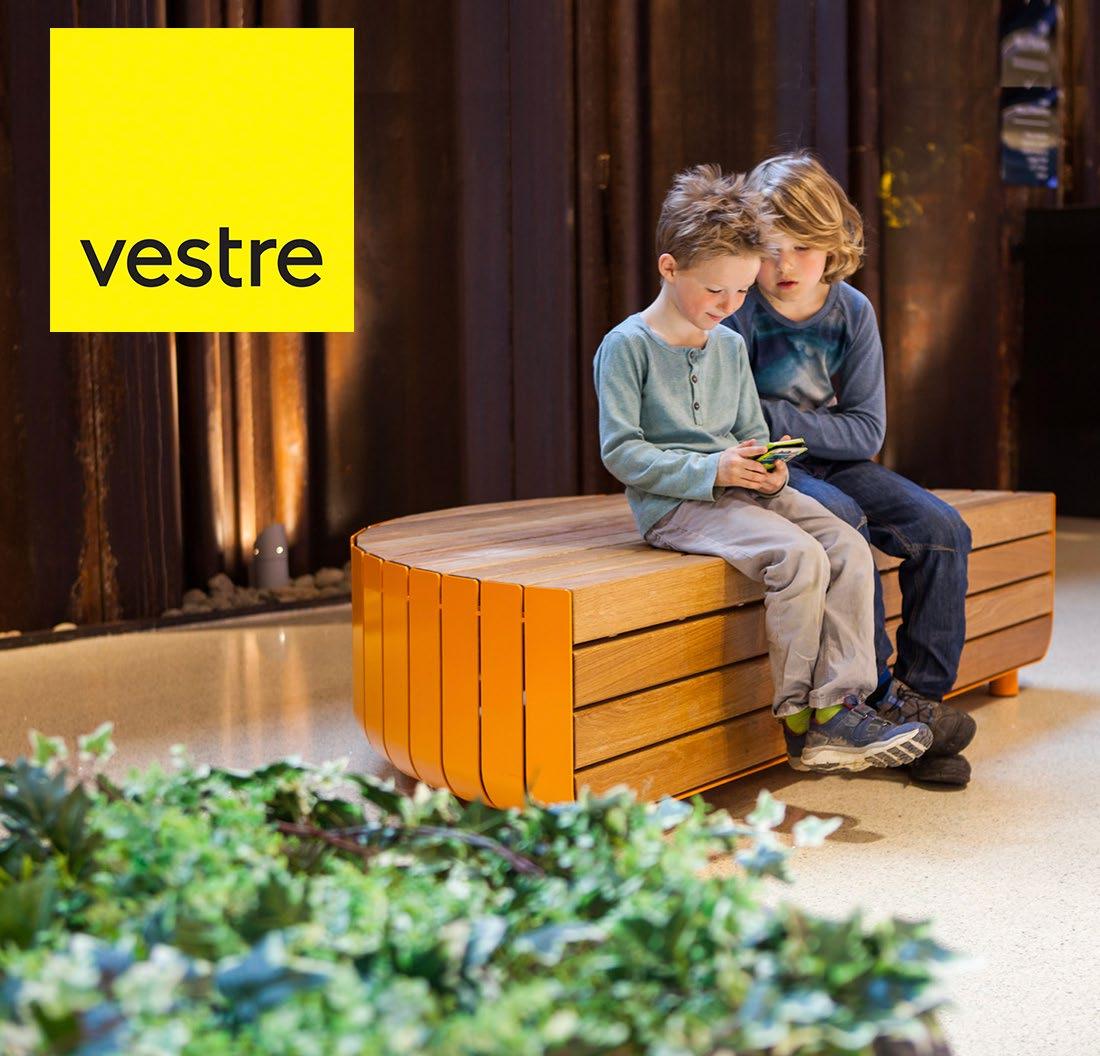
sharonw@victorstanley.com
cburke@vivarailings.com
mmachin@vortex-intl.com
christy@wadearch.com
kevin.spence@makrgroup.com
ka@webuildfun.com
ka@webuildfun.com
d.roberson@we-ef.com
amesser@wheeler1892.com
wsundquist@wgpaver.com patrick@wickcraft.com
04.25.23 tuesday PM
REGISTRATION
12:30-05:00
ATTENDEE REGISTRATION | Convention Center Lobby
02:30-05:00
EXHIBITOR REGISTRATION | Convention Center Lobby
SESSIONS
01:30-02:30
SESSION 00A | (HSW)
A PARK FOR THE FUTURE | Classroom C 202 A&B Conners Ladner, Emily Manderson & Shannon Coates
02:30-03:30
SESSION 00B | (HSW)
CULTIVATING PROSPERITY FOR ALL | Classroom C 202 A&B
Mark Meyer & Kevin Shepherd
03:30-04:30
SESSION 00C | (HSW)
MITIGATING URBAN HEAT ISLAND EFFECT | Classroom C 202 A&B Colter Sonneville
TOURS
02:00-04:00
TOUR 1A | (HSW, Sustainability)
FORT WORTH ZOO WALKING TOUR |
Adam Brewster & Ashley Lewis
TOUR 1B | (HSW, Barrier Free)
BOOTS MADE FOR WALKING - ADA TOUR |
Elaine Anderson, Andrea Lacour
02:30-04:30
TOUR 1C | (HSW, Sustainability)
THE STORY OF SOUTH MAIN VILLAGE |
Allison Docker, Anita Beard, Eric Garrison. Mike Brennan
LET’S PARTY
06:30-08:30
WELCOME RECEPTION | The Fort Worth Botanic Gardens and Research Institute
wednesday AM
TOURS
06:00-07:00
TOUR 2 | (HSW)
JOGGING TOUR OF DOWNTOWN | Convention Center Front
Nicholas Nelson
REGISTRATION
07:30-05:00
ATTENDEE REGISTRATION | Convention Center Lobby
SILENT AUCTION
08:00
INITIATION OF SILENT AUCTION BIDDING | Online Bidding
SESSIONS
08:00-09:00
SESSION 1 | (HSW)
KEYNOTE: MAKE IT NEW (AGAIN)
Ballroom C | Laurie Olin
09:00-10:00
EXHIBIT HALL BREAK AND REFRESHMENTS | EXHIBIT HALL
10:00-11:00
SESSION 02A | (HSW, Sustainability)
DALLAS URBAN AGRICULTURE PLAN | Classroom A
Mikel Wilkins, Jeffrey Landau, & Scott Snodgrass
SESSION 02B | (HSW)
RIGHT-OF-WAY: NOT JUST FOR STREETS | Classroom B
Jason Miller, Geoff Carleton, & Matt Buchnum
SESSION 02C | (HSW, Sustainability)
URBAN EDIBLE LANDSCAPES | Classroom C 202 A&B
Cheryl Beesley & Paris Sanchez Leavell
11:00-11:30
EXHIBIT HALL BREAK | EXHIBIT HALL
11:30-12:30
SESSION 03A | (HSW, Sustainability)
URBAN GSI: FROM ROOFTOP TO DRAIN| Classroom A
David Batts, Scott McGaughy
SESSION 03B | (HSW, Sustainability)
ARE TREES A COST OF DOING BUSINESS | Classroom B
Mark Mann, Justin Krobot
SESSION 03C | (HSW, Sustainability)
KASHMERE GARDEN:
EMPOWERING PEOPLE FOR CLIMATE ADAPTATION | Classroom C 202 A&B
Keiji Asakura, Jessica Eisma, Dominic Boyer, Ken Williams
AWARDS
12:30-02:00
AWARDS LUNCHEON | Ballroom C
02:00-03:00
AWARD WINNER CERTIFICATE AND PHOTOS | EXHIBIT HALL, Winners Circle
02:00-02:30
EXHIBITION HALL BREAK | EXHIBIT HALL
SESSIONS
02:30-03:30
SESSION 04A (HSW, Sustainability)
NATIVE PLANTS: ISSUES AND SOLUTIONS | Classroom A
David Hopman
SESSION 04B | (HSW, Sustainability)
A NEW MASTER PLAN FOR BRIT (FTW BOTANIC GARDEN) | Classroom B
Tary Arterburn, Bob Byers, Gwen Cohen, Andrew Duggan
SESSION 04C (HSW, Sustainability)
HENSLEY FIELD: A LIVING LABORATORY | Room C 202 A&B
Leah Hales, Jana McCann, Jim Adams, Sarah Fitzgerald
03:30-04:00
EXHIBITION HALL BREAK AND REFRESHMENTS | EXHIBIT HALL
04:00-05:00
SESSION 05A | (HSW, Sustainability)
ESTABLISHING URBAN PRAIRIE VER. 2 | Classroom A
Keiji Asakura, Matt Stahman, Carolyn White
SESSION 05B | (HSW, Sustainability)
ATT WORLD HEADQUARTERS | Classroom B
Kent Mendenhall, Carolyn Perna, Natalie Terrill
SESSION 05C | (HSW)
HOUSTON’S MEMORIAL PARK LAND BRIDGE | Classroom C 202 A&B
John Moss, Kate Tabony, Amna Ansari, Joe Meppelink
ALUMNI RECEPTIONS
05:30-07:30
TEXAS A&M | 203A
TEXAS TECH | 203B
UT ARLINGTON | 203C
TOURS
06:00-7:00
TOUR 3 | (HSW)
NEAR SOUTHSIDE FORT WORTH JOGGING TOUR | Convention Center Front
Nicholas Nelson
REGISTRATION
08:00-12:00
BADGE PICK-UP AND REGISTRATION (CLOSES AT NOON) | Convention Center Lobby
SESSIONS
08:00-9:00
SESSION 06A | (HSW)
TBAE RULES AND REGISTRATION UPDATE | Classroom C 202 A&B
Steve Ramirez, Sharon Briceño
SESSION 06B | (HSW, Sustainability)
IMPLEMENTING SUSTAINABLE IRRIGATION | Classroom B
David Garrison
SESSION 06C | (HSW)
HOLISTIC PARKS MASTER PLANNING | Classroom A
Ross DeVault, Jodi House
09:00-09:45
EXHIBIT HALL BREAK AND REFRESHMENTS | EXHIBIT HALL
09:45-11:00
SESSION 7 | (HSW)
KEYNOTE: INNOVATION, URBANISM, AND THE FUTURE OF LANDSCAPE ARCHITECTURE | Ballroom
Paris Rutherford, Allyson Mendenhall, Andy Taft, Tamela Thornton
SILENT AUCTION
11:15
SILENT AUCTION BIDDING ENDS | Silent Auction App
11:00-11:30
EXHIBIT HALL BREAK | Exhibit Hall
11:00-12:30
TEXAS STUDENT ASLA CHAPTERS LEADERSHIP MEETING | Room 202 CD
thursday AM 11:30-12:30
LUNCH ON YOUR OWN
SESSIONS
12:30-01:30
SESSION 08A | (HSW)
ART AS A CATALYST FOR HEALING | Classroom A
Katie Robillard, Charlotte Tonsor
SESSION 08B | (HSW, Sustainability)
INNOVATING DESIGN FOR EXTREME HEAT | Classroom B
Rose Jones, Lannie McClelen, Brent Bucknam
SESSION 08C | (HSW)
HOW PLANNING + LA SHAPED FTW | Classroom C 202 A&B
Barry Hudson, Joel McElhaney
01:30-02:00
EXHIBIT HALL BREAK | EXHIBIT HALL
02:00-03:00
SESSION 09A | (Non HSW)
SHAPING FUTURE LANDSCAPE ARCHITECTS | Classroom 202 A&B
Margarita Padilla-Posey, Anne Harman, PLA, Joe Carreon and Deidra Davis, PhD
SESSION 09B | (HSW)
SOUTHERN GATEWAY: PARK WITH PURPOSE | Ballroom C
Chuck McDaniel, April Allen, Ryan Blaylock
02:00-04:00
SESSION 09C | (HSW)
INTRODUCTION TO DRONE TECHNOLOGY | Classroom 202C
Russell Thomman, PLA
03:00-04:00
SESSION 10 | (HSW, Barrier Free)
INCLUSIVITY IN ACTION: JAMES DRIVER PARK | Ballroom C, Outside
Tara Klein & Jason Philbin
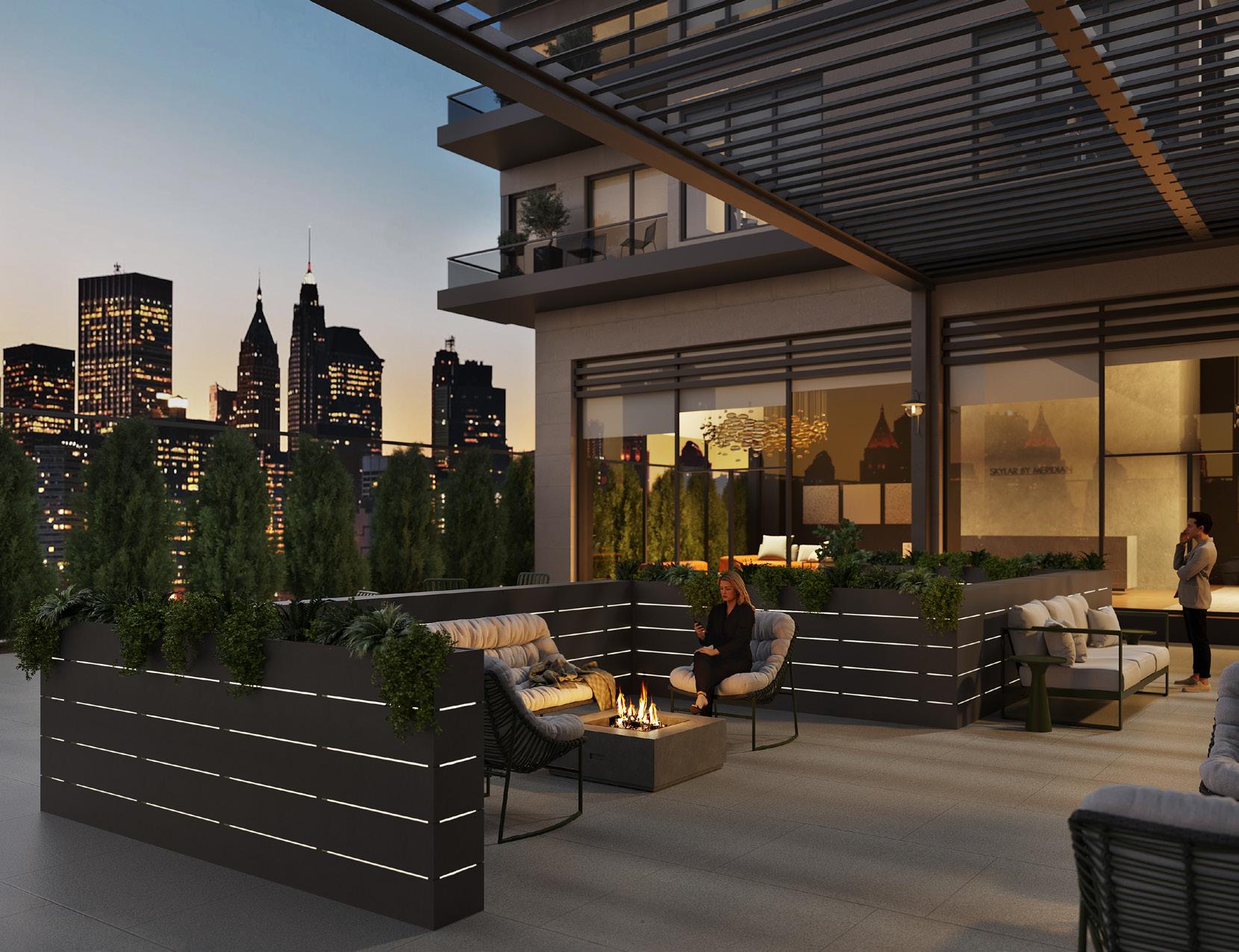
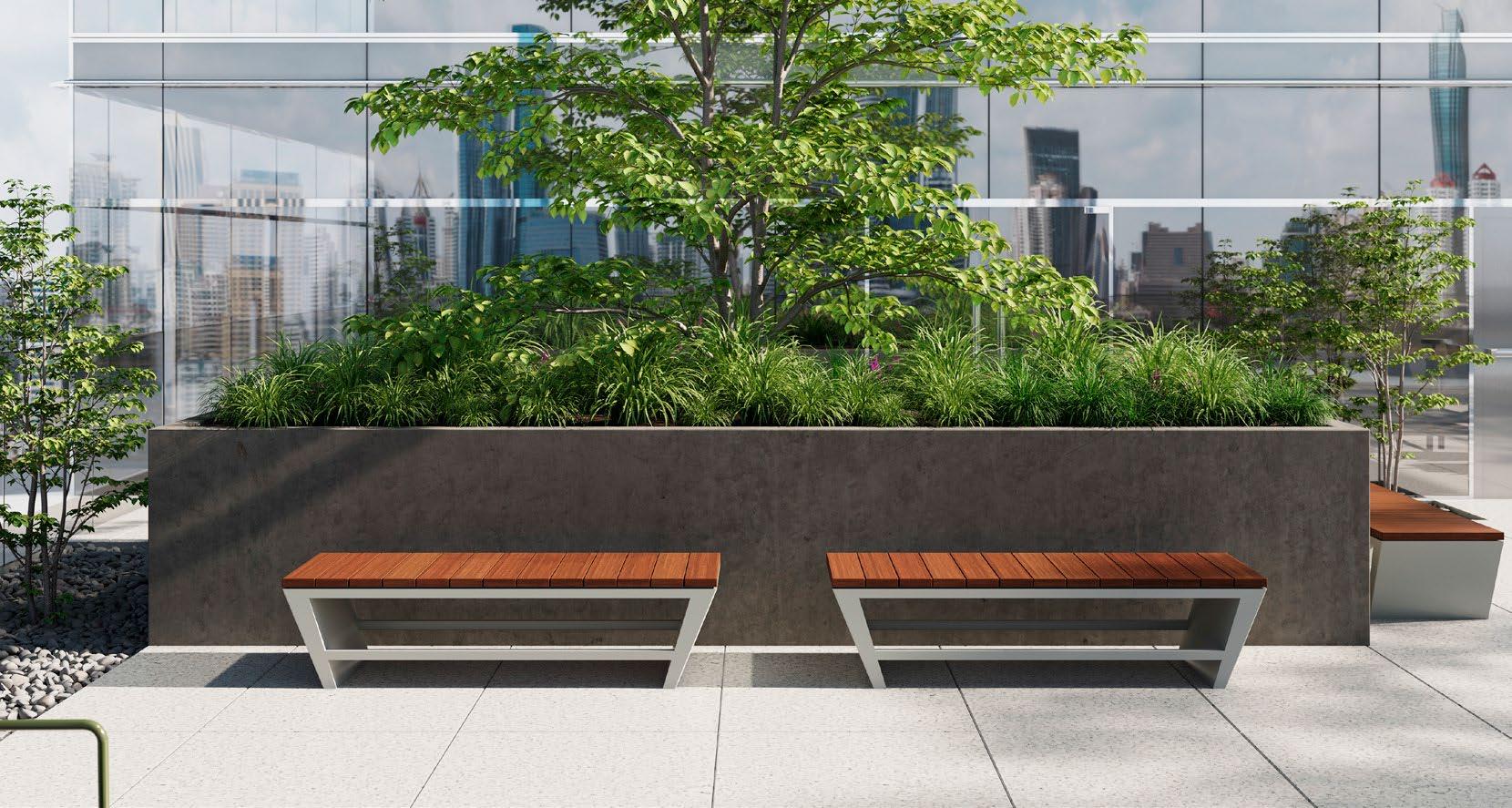
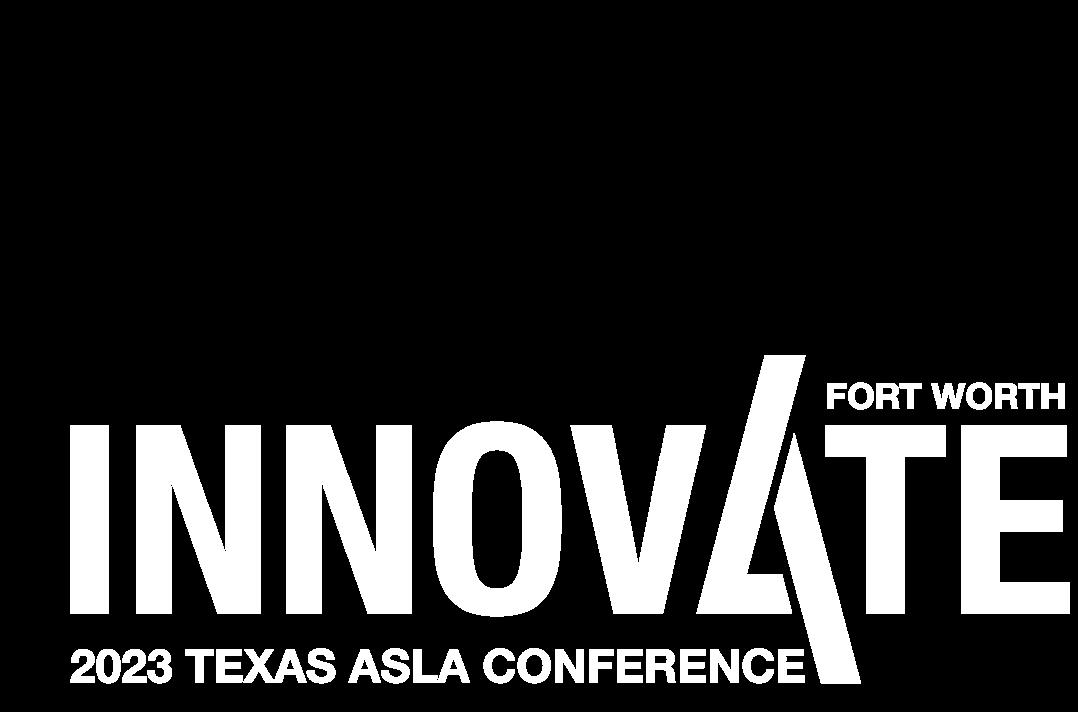
Since the early 2000s, Frisco, Texas has been one of the fastest-growing cities in the United States. As the city’s explosive growth continues, plains and pastures are replaced with development. Few tracts of undeveloped land remain within the city, and fewer still hold remnants of the vast grasslands that once supported a colorful array of wildlife. Northwest Community Park’s 120 acres are large enough to fully immerse visitors and its proximity to three public schools opens the door to an array of educational and recreational possibilities. The space is situated to deliver a resounding impact on not only Frisco but on the Dallas-Fort Worth Metroplex.
The Park contains 5.6 miles of volunteer-built mountain biking trails built by the Dallas Off-Road Bicycle Association (DORBA). The trails wind through rare patches of native Blackland Prairie— some expanses likely thousands of years old. The northern half of Northwest Community Park contains mostly remnant prairie and is separated from the tilled agricultural land in the south by dense stands of successional woodland which wind through the site, threatening remnant prairie communities. Disturbances like fire are vital to limiting successional woody species and preserving an open mosaic of grassland and woodland. Healthy soils in the southern half of the site set the stage for prairie restoration, and proximity to schools allows the park to become a living laboratory as the prairie grows.
Given the site’s ecological and community significance, a robust public engagement process is vital to the Northwest Community Park’s success. Two digital workshops, each with a corresponding online poll, were held to gather feedback on the community’s vision for the park. The first was a visioning workshop used to determine the values and desires of community members. The consensus was a strong emphasis on ecological restoration, improved bike facilities, and community gathering spaces. The second engagement window saw two plan alternatives presented to the public: one scheme was a lighter-touch concept focused on concentrating program elements and maximizing natural space, while the other was a more expansive scheme with destinations scattered throughout the site. The latter plan, “Destinations,” was the clear preference of community members and stakeholders.
In the final plan, high-intensity programming and heavy grading are relegated to non-precious ecological zones. Woodland, agricultural land, and invasives-heavy perimeters are sites for parking, plazas, architecture, lawn, and other programmatic features. Two patches of ancient prairie are preserved completely, with only existing single-track mountain biking and hiking trails intersecting them. A twelve-foot shared use path acts as containment for future burns and allows access to the entire site. A dynamic array of programming is strung along the path: an education pavilion, native gardens, adventure and discovery playgrounds for all ages, a great lawn, picnic groves, and more.
Northwest Community Park is poised to set an example for the future of public space. Gone are the days of the fully mowed, ecologically dead, high-maintenance park. It represents the possibilities of parks designed with both ecosystems and humans in mind, providing an immersive recreational experience and ecological functionality in symbiosis. Its adjacency to schools and major regional attractions elevates its importance as both a treasured public space and educational instrument. Its community-selected programming and preservation of volunteer-built bike trails make it a space by and for the people of Frisco.
Conners Ladner, FASLA
Conners Ladner is a professional Landscape Architect with Design Workshop in Austin, Texas. Conners is an honors graduate in landscape architecture from Louisiana State University, where he was selected as the student commencement speaker for the College of Art and Design graduation ceremony.
Conners believes that our community’s health and happiness are greatly strengthened by spending time in the natural world. His objective with design is to create outdoor spaces that are comfortable, attractive, reflective, and fun. Through research, analysis, iteration, and innovation, he strives to formulate a creative design response to parallel the inherent beauty of nature in urban environments.
Shannon Coates, ASLA
Shannon Coates is the Director of Parks and Recreation for the City of Frisco, where her work focuses on advancing the many benefits of play, both for children and adults, through internal and external partnerships. Shannon is a Certified Parks and Recreation Executive, a published author and a nationally and internationally recognized speaker. In addition to her extensive experience in parks and recreation, Shannon is a certified Black Belt in LEAN. Her research interests include the power of play, the science of storytelling and the efficacy of equinefacilitated psychotherapy. Shannon holds a BA in elementary education from Transylvania University, a MBA from the University of Central Florida and a PhD in Educational Leadership with a concentration in Research and Evaluation Methods from the University of Florida.
Emily Manderson
Emily Manderson works to provide ecological expertise to a variety of project types such as developing Best Management Practices for the Houston Parks Board to working on Master Plans and facilitating visioning sessions. From 2014-2020, Emily was the Conservation Director at the Houston Arboretum and Nature Center; a 155 acre nature sanctuary in the heart of central Houston. She oversaw the restoration and management of the site’s ecosystems and the landscape implementation of an ASLA awarded master plan to increase biodiversity and ecosystem resilience in the face of future climatic events.
Before working at the Arboretum, Emily worked as a Senior Environmental Designer and Consulting Manager at the Lady Bird Johnson Wildflower Center in Austin, TX for many years
In this session, we will discuss the long-term fiscal ramification’s for city governments and residents of land use decisions. This means understanding the interlocking nature of development patterns, transportation networks, and natural systems, and of the relationship between block, neighborhood, city, and watershed scales. This century is being defined by cascading ecological crises, which require concerted, systemwide action. At the same time, decades of auto-oriented development practices are leaving cities unable to pay for basic infrastructure repairs. Many important climate-related actions will need to be taken at the local level, but resource-constrained local governments will have limited ability to act. To reverse the trends of municipal and ecological bankruptcy across the country, local leaders and landscape professionals alike need to develop a holistic, systems-oriented approach to managing the built and natural environments. The professions of landscape architecture and planning are often put in the position of working with fragmented pieces of a broader system, with limited ability to truly address the ecological, social, or fiscal sustainability of the context we sit within. Developing with a more compact footprint, rightsizing our infrastructure, and restoring natural systems can create more value for local governments facing a revenue gap while also building resilience in the face of climate chaos. This session focuses primarily on the role of landscape designers and planners in shaping long-term viable communities. From developing a shared understanding of the system-wide fiscal, social, and ecological impacts of all land decisions, we can properly communicate the stakes to local officials and residents. Developing a common language about the varied but connected impacts of development is a critical step toward addressing our economic and environmental predicaments.
A Principal in TBG’s Dallas office, Mark has more than 20 years’ professional experience encompassing all aspects of landscape architecture and planning. He serves as Chairman of TBG’s Board of Directors, providing strategic guidance to continuously elevate all aspects of TBG’s practice and corporate culture. Mark also greatly values the charrette process and the power of hands-on, multidisciplinary teamwork to deliver extraordinary project solutions. He is an experienced facilitator at guiding large stakeholder groups toward a shared vision and he frequently leads multiday creative planning workshops to jumpstart the design process.
Kevin is a licensed engineer with over 27 years of experience in civil engineering, planning, site development and municipal finance. He spent 17 years at global A/E firm HDR as a leader of the Dallas office’s municipal services program and later as National Director of the Community Planning + Urban Design market sector. In 2011, he founded Verdunity to provide people and resource-focused planning and engineering solutions to progressive cities and developers seeking to move beyond business as usual. Known for his willingness to challenge the status quo, Kevin enjoys educating others on fiscal and environmental impacts of various development patterns and thrives in environments where multiple perspectives must be brought together. Kevin has served as a Verifier for ISI’s Envision rating system and a member of the Technical Advisory Committee for the STAR Communities program, is a vocal advocate for the non-profit group Strong Towns and serves on the board of the north Texas chapter of the Congress for the New Urbanism. He hosts the Go Cultivate! podcast and writes and speaks regularly on the topics of fiscally based planning, small scale development, economic gardening and neighborhood revitalization.
Due to climate change, Texas cities are warming faster than the global average of .36 degrees per year. Within 25 years, the number of 100° F days is expected to double, making Austin’s climate more comparable to Phoenix.
Due to the Urban Heat Island (UHI) effect, cities have higher daytime and nighttime temperatures compared to surrounding rural areas, making cities especially vulnerable. At the same time, the state is rapidly urbanizing. Texas cities have grown by 18% over the last decade, while its rural population has grown by only 1%. 84% of the state’s population lives in metro areas that can be more than 10° F warmer than the surrounding countryside. Adapting cities to be more resilient and sustainable in an era of heat emergencies is an urgent task. Built environment professionals (landscape architects, planners, and architects) are well positioned to design cities that tangibly mitigate UHI and ensure the vitality of public spaces and the health of urban dwellers.
This program will show designers how to deploy the most effective UHI mitigation strategies at a neighborhood scale and tailor them to their city’s climatic conditions.
Colter is a landscape architect and certified arborist who hails from the wind-swept plains of Chicago. He holds a BLA from the University of Illinois and recently completed a MSc in Urban Design & City Planning from University College London. In his free time, he enjoys paddle boarding and birding, and on a good day he mixes the two.
Experience the immersive habitats and themed environments of the African Savanna, Elephant Springs and Asian Predator and Hunters of Africa exhibits at the Fort Worth Zoo. Ashley Lewis and Adam Brewster will discuss the challenges of designing signature features like a floating river village, a giraffe feeding deck, a hippo river, and a 40’ waterfall with grotto. You’ll see real world examples of construction techniques and design details used to create lush, layered environments that are enriching for both visitors and animals alike.
As Dunaway’s project manager and design lead Adam Brewster brings an infectious energy to every step of the design process. From programming to implementation, he is adept at balancing creativity with the many functional needs of a working zoo. His immersive designs promote a sense of discovery and wonder where animals and visitors share naturally enriched environments. Adam and his collaborative team have created some of the Fort Worth Zoo’s most iconic themed attractions including Safari Splash, African Savanna, Elephant Springs and the recently opened Asian Predators and Hunters of Africa.
 Ashley Lewis
Ashley Lewis
Adept at guiding multidisciplinary teams through the complex design and construction process, Ashley. has helped make many of Fort Worth Zoo’s largest capital improvement projects a reality. A tireless worker with an eye for detail her project experience includes parks and public spaces around the metroplex.
This walking tour will showcase common accessibility requirements, point out areas of non-compliance, and discuss design solutions. Applying accessibility codes can be tricky, especially when reading from a code book. Seeing the requirements implemented inperson is a valuable way to deepen your understanding and best practices for accessibility compliance. We will apply the Texas Accessibility Standard (TAS) and the Americans with Disabilities Act (ADA). We will also discuss some areas where the two codes may differ. The walking route will showcase common elements such as accessible routes, curb ramps, tables, protruding objects, and reach ranges. The tour group will pause at various elements and the tour leaders will demonstrate why there may be a compliance issue or discuss why the element is acceptable. The walking tour will start in the Convention Center and travel to the Water Gardens with stops along the way. There will be two tour leaders to allow for two groups at the same time. We request a maximum of 100 attendees for this session, limiting each group to 50 participants to ensure all participants can hear the leaders and engage with the tour. Participants are encouraged to engage with the tour leaders in an interactive manner and may ask questions throughout. A printed handout will be provided to participants that includes accessibility code topics that will be referenced throughout the tour.
A designer with over 20 years of experience in design and accessibility, with over a decade focused on accessibility compliance. Elaine’s experience includes managing projects from the design phase through final construction. Mrs. Andersen’s design experience includes extensive knowledge of building codes and ordinances for both commercial and multi-family facilities. Elaine is a Registered Accessibility Specialist in Texas and a National Certified ADA Coordinator, having consulted on over 500 projects in Texas alone and having performed more than 1,000 site inspections for accessibility compliance within her career. Elaine is also a Navy Veteran, bringing a valuable real-world perspective to accessibility.
Andrea LaCourMrs. LaCour is a Registered Accessibility Specialist in Texas and a National ADA Coordinator with 12 years’ experience in accessibility compliance. Andrea has provided ADA consulting on over 500 projects across the country; having consulted on hundreds of projects in Texas including dozens of State and local parks facilities. She understands the differences in accessibility requirements from the ADA to TAS to FHA. She is a sought-after presenter, with over 100 presentations under her belt including AIA, ASLA, ASCE conferences and the national ADA Symposium. Andrea is also passionate about volunteerism - she is a dedicated mentor for Big Brothers Big Sisters & sits on the Board of Directors for the ACE Mentor Program of Austin.
At the intersection of Vickery Blvd and South Main St, the northern boundary of the urban village, the walking tour begins with the history of South Main Village and an introduction to Near Southside Inc., the non-profit organization integral in the creation of the district’s formbased code, and the administrator of Near Southside Tax Increment Finance (TIF) district. NSI, and visionary developers who began investing in the neighborhood in the early 90’s, laid the framework for the community we see today. Populated with charming historical buildings, and “good bones” perfect for infill development, South Main Village was well-positioned for redevelopment, but required extensive collaboration.
NSI worked with the City of Fort Worth to redesign and reconstruct South Main Street, and since 2017, when this Complete Streets project was finished, the neighborhood has seen tremendous development of all scales, and become a regional destination all its own.
The improvements to South Main St, at just under a mile in length, create a safe and accessible streetscape that quite literally laid the groundwork that supports an eclectic mix of independently owned shops and restaurants and equally unique public spaces. The tour will also include Micro Park 2.0, a pocket park activated by food trucks, creative play areas, and a pop-up art gallery. Just around the corner, is Bryan Ave, an adjacent street reconstruction project, as well as The Skinny and Calhound dog park, two innovative public parks that have become popular open spaces for residents and visitors to the area. The recent addition of a parklet along S Main St, and The Squeeze, a pedestrian plaza in a converted service alley, resulted from pilot programs through CFW to envision new ideas for the pedestrian realm.
Even as innovation continues with additional planned improvements, South Main Village has very quickly become one of the most pedestrian-friendly environments in urban Fort Worth.
Anita Beard, PLA, ASLA is a firm Associate and Discipline Lead at Dunaway Associates in Fort Worth, Texas. Her project experience in public and private sector design ranges from neighborhood park, trail planning, civic/community center projects to healthcare master planning and urban streetscape improvements. Anita is actively involved in the Fort Worth AEC community having served in many roles for DFW ASLA, CREW Fort Worth, ACE Mentor and a current member of the Near Southside Design Review Committee and Texas A&M’s Landscape Architecture Advisory Board. Anita was an integral design team member for the South Main Complete Streets project as well as adjacent site-specific design projects like 601 S Main and UTSW Medical Center.
Mike Brennan, AICP is the President of Near Southside, Inc., the non-profit economic and community development organization leading the revitalization of Fort Worth’s historic Near Southside. This eclectic mixed-use district is home to six world-class healthcare anchors and a rapidly growing creative sector. The widely renowned work of district’s artists, musicians, and arts organizations led the Texas Commission on the Arts to recognize the Near Southside as a state-designated cultural district in 2020.
Mike became NSI’s president in 2018 after leading the organization’s planning and development efforts for 12 years. In addition to leading placemaking projects and the Near Southside’s Tax Increment Reinvestment Zone (TIRZ), NSI is also responsible for a wide variety of communityfocused promotional programs, including festivals and events that attract thousands, and a wide range of business assistance initiatives.
Mike received a master’s degree in urban planning from Harvard’s Graduate School of Design and worked in the City of Fort Worth’s Planning Department prior to joining NSI. He has served on the Board of Directors for the Fort Worth Transportation Authority (Trinity Metro) and on the Fort Worth City Plan Commission. He was a founding leader of Fort Worth’s bike sharing system and continues to be closely involved with its expansion.
Allison Docker, PLA, ASLA; Allison’s portfolio includes a variety of project types including public parks and streetscapes, botanical gardens, corporate campuses, retail and mixed-use developments. Recently joining the team at Garrison-Jones, Allison spent the last four years as the Director of Urban Design and Placemaking at Near Southside Inc. In this role, she collaborated closely with city staff, community members and real-estate developers, on a wide range of projects that focused on the public realm within the Near Southside District. She plans to build from this skillset by continuing to advocate for unique and vibrant public spaces that serve their local communities.
Eric Garrison, PLA, ASLA is a Principal and Co-Founder of Garrison/Jones with 20 years of professional experience. He has been integral to a variety of works ranging from large scale, complex land planning projects to intimate, detailed landscapes across an array of contexts and geographies throughout the United States, Caribbean, Latin America, and Asia. Capitalizing on these strengths, Eric has been integral to the successful creation of numerous notable and award-winning projects. He led the design team on The Skinny and Calhound projects located in the South Main Village while acting as Managing Principal of TBG Partners Fort Worth Office.
ARE TREES A COST OF DOING BUSINESS? MARK
KASHMERE GARDEN: EMPOWERING PEOPLE FOR CLIMATE ADAPTATION
KEIJI ASAKURA, JESSICA EISMA, KEN WILLIAMS AND DOMINIC BOYER

NATIVE PLANTS: ISSUES AND SOLUTIONS
A NEW MASTER PLAN FOR BRIT (FTW BOTANIC GARDEN)
TARY ARTERBURN, ANDREW DUGGAN, BOB BYERS AND GWEN COHEN
HENSLEY FIELD: A LIVING LABORATORY
LEAH HALES, JANA MCCANN, JIM ADAMS AND SARAH FITZGERALD
ESTABLISHING URBAN PRAIRIE VER. 2
KEIJI ASAKURA, MATT STAHMAN AND CAROLYN WHITE
ATT WORLD HEADQUARTERS SANDRA BARKER, CAROLYN PERNA AND NATALIE TERRILL
MEMORIAL PARK LAND BRIDGE
This leisurely morning jog will begin at the conference center and make a clockwise loop around the city. The first stop will be Burnett Plaza by Peter Walker Partners. The high touch plaza also includes public art by Jonathan Borofsky and Isamu Noguchi. From there the tour will proceed west on 7th to Trinity Park. There we will enter the park and jog north along the trail towards Panther Island where we cross the river. We will then travel below Heritage Park before climbing the up the hill through the Tarrant County Community College campus allowing us to pass by Heritage Park from another direction. From Heritage Park we will proceed to Main Street and pass Sundance Square before returning to the conference center.
Mr. Nelson is a runner and has called Fort Worth home for longer than anywhere else. His love of design and collaboration has resulted in more than 20 years of experience practicing and teaching landscape architecture. During that time running has allowed Mr. Nelson to experience and explore built and natural environments around the world. His recent service on the board of directors for Arts Fort Worth has provided a new richness to what Fort Worth has to offer.
In a new talk for the conference, Innovate -- or Make it New (again), Laurie Olin, FASLA, will address the questions of What is new? What comprises innovation as opposed to mere change? Why does it matter, and how might we think about it in Landscape Architecture at this moment? There are big and interesting differences between the nature of change in science and in art. Innovation in Landscape Architecture, with its feet in both camps, faces both limitations and opportunities as we confront global climate change in a culture obsessed with “What’s New?”
Laurie Olin is a distinguished teacher, author, and one of the most renowned landscape architects practicing today. From vision to realization, he has guided many of OLIN’s signature projects, which span the history of the studio from the Washington Monument Grounds in Washington, DC to Bryant Park in New York City. His recent projects include the Barnes Foundation in Philadelphia, Pennsylvania and Simon and Helen Director Park in Portland, Oregon, and the Los Angeles River Master Plan.
He is Emeritus Practice Professor of Landscape Architecture at the University of Pennsylvania, where he taught for forty years, and is former chair of the Department of Landscape Architecture at Harvard University. Fellow of the American Academy of Arts and Sciences, a Fellow of the American Society of Landscape Architects, and recipient of the 1998 Award in Architecture from the American Academy of Arts and Letters, he is the recipient of the 2012 National Medal of Arts, the highest lifetime achievement award for artists and designers bestowed by the National Endowment for the Arts and the President of the United States. He also holds the 2011 American Society of Landscape Architects Medal, the society’s highest award for a landscape architect.
Today’s cities are experiencing rapid urbanization, climate change, and numerous other stresses. Food supplies are vulnerable to disruptions from extreme weather, labor shortages and a lack of diversified production. Although it is projected that 80% of our food will soon be consumed in cities, few municipal governments have established plans to ensure their food system is sustainable and resilient in the face of these mounting climate and societal challenges.
In May 2020, the City of Dallas formally recognized the risks associated with climate change by adopting the Comprehensive Environmental and Climate Action Plan. Based upon principles of mitigation, adaptation, environmental quality, and social equity, the CECAP includes 97 actions supporting eight different goals, including 14 actions related to Food and Urban Agriculture. Goal seven states, “All Dallas’ Communities Have Access To Healthy, Local Food”. This goal includes a total of five objectives and 14 action items. Action item three of this goal is to develop a Comprehensive Urban Agriculture Plan. The development of this plan addresses gaps in the resiliency of Dallas’ food system by providing five key recommendations to increase local production, food sourcing and access through increased agricultural activities.
A Comprehensive Urban Agriculture Plan (CUAP)is about more than individual farms or community gardens- it is about fostering a thriving, equitable, and resilient local food system that empowers individuals, unites communities, creates economic opportunity, and provides affordable, fresh, and nutritious local food. In collaboration with local stakeholders, the City of Dallas and its Project Team have developed this CUAP to outline the current conditions of Urban Agriculture in Dallas and describe a roadmap to achieve a stronger, more resilient urban agriculture ecosystem in the years to come.

An Environmental Engineer with over 25 years of experience, Mikel collaborates with teams across the firm to evaluate the sustainable performance of projects under design to identify opportunities to enhance the triple bottom line. Mikel specializes in planning, design, and policy related to the integration of green infrastructure systems into the built environment. He enjoys multi-disciplinary design approach projects that rely on creativity, innovation, education, and compassion to guide the planning and design process and ultimately provide the most community benefits. Mikel also has a passion for education and currently teaches a class on sustainable infrastructure as an adjunct professor at Southern Methodist University.
Agritecture Consulting (formerly Blue Planet Consulting) is the leading consulting firm in the rapidly emerging industry of indoor agriculture. Our project experience includes production or education-focused hydroponic greenhouses, feasibility studies for commercial vertical farms, and market research and analysis. As Director of Business Development, I work to develop our target markets, optimize our sale cycle, and understand the needs and goals of our incoming leads and clients. Additionally, I oversee all of Agritecture Consulting’s client engagements. I ensure that our projects remain on time and on budget. I work with our interdisciplinary team to provide market research, crop selection, design recommendations, and economic analysis.
As a farmer and real estate developer, Scott works at the intersection of people + plants + place to create healthy communities. Through his company, Agmenity, Scott has become one of the primary thought leaders in the national agrihood movement, regularly speaking on the topic at regional and national conferences. His work at Meristem Communities pushes the envelope in real estate development by focusing on creating “places for people.”
With the introduction of complete streets into the built environment, corridors no longer have a vehicular focus but are a lifeline for developing communities. Thoroughfare development has increased the need for design input from multiple disciplines to create environments focused on mobility, accessibility, and beautification. Traffic engineers have become increasingly important to integrate the modes of traffic together in a shareable and functional manner. TEI, a Houston engineering firm, prioritizes the implementation of bike lanes and trail connections to promote pedestrian-friendly environments.
As landscape architects, Clark Condon contributes to the enhancement of transportation corridors; an important part of the public realm that defines a community’s aesthetic quality, identity, economy, health, social cohesion, and opportunity. Communities are creating Economic Development Corporations to spur economic growth and sustainability. Pearland Economic Development Corporation oversees one of Houston’s rapidly growing suburbs. Emerging from Pearland’s 20-year vision, a new holistic strategic plan looks to increase economic diversification through investment in key transportation corridors to ensure they are efficient, aesthetically pleasing, and well maintained for the city to remain a destination for employment and development. The reinvestment in streetscapes promotes revitalization, beautification, and unique branding. Communities utilize a variety of funding sources to support these efforts including fundraising, Capital Improvement Programs, Tax Increment Reinvestment Zones, Public-Private Partnerships, bonds, non-profit entities, county dollars, adjacent property owners, and institutions.
This panel features a landscape architect, a traffic engineer, and an economic development president to discuss how they each play a role in the utilization of right-of-way for community corridor enhancement and the creation of safer, shareable thoroughfares.
Jason joined Clark Condon in 1998 soon after graduation from The Ohio State University and an internship in Columbus, Ohio. He has honed his skills in landscape architectural design, detailing, and management to a level of excellence. He understands the importance of collaboration and compatibility between the design team and client and maintains clear lines of communication. His vast experience on a variety of project types have allowed him to deliver successful projects that are on time and within budget. Since becoming an owner in 2014, he has focused on building long-lasting relationships with our clients and team members and elevating the firm’s operations. Through a systematic approach, Jason continues to improve Clark Condon’s systems, as well as technology and procedures, to increase the firm’s efficiencies and productivity.
As a Senior Principal at TEI, and leader of the firm’s Planning & Design practice, Geoff focuses on developing multimodal transportation networks for sustainable communities. This includes designing safe, livable, streets, and developing transit, walking, and bicycle networks that provide people attractive, healthy choices to access opportunity. He has led major projects including METRO’s New Bus Network, the Houston Bike Plan, the Montrose Walk & Bike Plan, and the Houston Bikeway Design project for Harris County. Some of his other favorite projects are the reimagining of healthy, active streets including Bagby in Downtown and Cullen through the University of Houston. He has also worked extensively at the intersection of transportation, health, and economic development to implement positive change in communities.
Matt Buchanan currently serves as president of the Pearland Economic Development Corporation (PEDC), where he directs all business attraction and retention activities for the fastest growing city in the Houston MSA. Under his leadership, the PEDC has attracted over $900 million in capital investment and recruited several major employers to the community, including Lonza, Endress+Hauser, Mitsubishi Heavy Industries Compressor Corp., KelseySeybold, Merit Medical Systems, Inc., and Dover Energy. Prior to joining the PEDC, he was the senior director of business attraction and retention for the Greater Omaha Chamber of Commerce and previously served for the Council Bluffs Area Chamber of Commerce in Council Bluffs, Iowa, as the senior vice president of economic development. Buchanan earned bachelor’s degrees in Political Science and Business Administration from the University of Iowa and earned his MBA at Creighton University in Omaha.
Jason GeoffUrban Edible Landscapes explores the specific challenges of designing and implementing edible landscapes in the urban environment. Specific areas of discussion will include health and welfare benefits, innovative design opportunities, impacts of edible landscapes on climate change, as well as the specific challenges associated with edible plantings.
With a passion for sustainability and over 30 years of experience designing landscapes in North and Central Texas, Cheryl Beesley presents programs on landscaping with edible plants and rainwater harvesting in Texas. She has authored ‘Landscaping with Edible Plants in Texas’, published by Texas A&M in 2014, as well as ‘The Compatibility of Edible Plants with the SITES Initiative’ as a part of her master’s degree from U.T. Arlington. She is currently working at Teague, Nall and Perkins in their Fort Worth office.
Paris began her career in 2012 and is experienced in landscape design, irrigation design, and planning. She gained her Masters of Landscape Architecture from the University of Texas at Arlington in 2016 and became an RLA in 2022. She is a Texas native plant expert, and her experience includes design, construction documentation preparation and illustrative design for projects ranging from residential, parks, trails, entry features, master planning, flood mitigation and low impact development (LID), irrigation plans, and site development.
For most of Texas, urban runoff is becoming a bigger issue. With our extreme weather patterns and frequent “historic” rain events, we are seeing property damage as a result of these events rise as fast as the floodwaters do. Historically, our stormwater measures have been in the form of large detention ponds for slowing water, but as we promote density and urban centers, there is just no room for these outdated techniques. Green Stormwater Infrastructure offers another option. One that meets the stormwater management needs in tight urban spaces, but also one that prevents downstream pollution, solves tough engineering challenges, creates amenity spaces and habitat, prevents downstream erosion and habitat loss, reduces heat island effect and can be a major participant in carbon sequestration.
David Batts, President of Construction EcoServices and Scott McGaughy, CEO of Greenrise Technologies are going to share their experiences managing urban runoff from the rooftop utilizing Green, Blue and Purple roofs, to the sidewalks implementing Permeable Pavements, Structural Tree Cells and Bioretention Planters to the stormdrain using Underground Detention Systems, Water Quality Systems and Rainwater Harvesting systems. This will be a look at urban redevelopment projects throughout Texas and Louisiana that offer a how to guide for urban stormwater management that has enormous impact.
Mr. Batts is the co-founder of the Texas Land/Water Sustainability Forum and has been a part of leading the adoption and implementation of Low Impact Development throughout the state of Texas. Through the Forum’s efforts and the success of their Professional Low Impact Development Design Competitions in Houston and North Texas, they have successfully proven that Low Impact Development not only offers an ecologically sustainable solution, but also provides opportunities to decrease infrastructure costs, increase lot yield, and provide an economically viable answer to all types of development. Because of his efforts, developers throughout Texas are using Low Impact Development to differentiate themselves while positively impacting their bottom line. Mr. Batts is the President of Construction EcoServices, a services and systems provider focused on all aspects of storm water quality and quantity management.
Scott McGaughy, CEO and Founder attended Middle Tennessee State University, where he earned his undergraduate and graduate degrees in Aerospace. Scott loves to fly. It is this systematic approach of aircraft and propulsions that also led him to a deep respect and love of nature and the balance that lies within it. Whether on a roof or at grade, to be able to restore the balance in nature through a systematic approach brings him Scott great joy. He resides in Murfreesboro, TN, with his wife Michelle, and their two children, Brennan and Reilly.
Join us for an overview of the history and current status of tree ordinances in Texas, lessons learned working collaboratively through the planning, design, permitting, construction, and operations phases, and future considerations for tree ordinances and planning practices in Texas. The presentation will detail the current threats to trees in Texas, sustainable solutions and practices that can be implemented in the land development and construction processes, recommendations on building long-term resiliency for changing environmental conditions, and the importance of having an Arborist on your team.
Mark Mann is the owner and founder of Tree Mann Solutions, a consulting arborist firm that employs nearly a dozen arborists throughout the state of Texas. TMS has offices in Austin, San Antonio, and Dallas/Fort Worth and serves the land development industry by leveraging green industry experience through planning, permitting, and preservation to save time, money, and trees. Mark graduated from Texas A&M University with a B.S. in Horticulture in 2012. Mark is a Board-Certified Master Arborist and has numerous other credentials under that certification. He rose through the ranks in a large commercial tree care organization before striking out to create his own consulting firm in 2019. Mark, his loving wife, and their three children live in the Austin area.
Justin Krobot
Justin Krobot is the Operations Manager for Tree Mann Solutions and has 10 years of experience as an arborist serving the City of San Antonio as Assistant City Arborist in the Development Services Department, the San Antonio River Authority as Mission (and Museum) Reach Superintendent, and most recently as Operations Manager for Tree Mann Solutions, LLC starting in 2021. Justin is a Board-Certified Master Arborist with Tree Risk Assessment Qualification and Oak Wilt Qualification endorsements. Justin is also a Project Management Professional (PMP) and obtained an undergraduate degree from Texas A&M University in Natural Resource Management and a Master of Business Administration from the University of Texas – San Antonio in Project Management. Justin enjoys the challenge of tree preservation and looks forward to providing valuable information and making recommendations to preserve desirable trees while considering project constraints and stakeholder expectations with the planned improvements. Justin, his wife, and their son live in the New Braunfels area.
Once thriving African American community, Kashmere Garden has been hit by multiple storm events in recent years including damaging Hurricane Harvey. The damages have been extensive and exacerbated by pre-existing inadequate storm water drainage infrastructure. Recovery and rebuilding from hurricanes Ike to Harvey has been slow and funding allocated for the community has not been equitable for full rebuilding of the community.
Frustrated in slow and inadequate support from government, what should a community do to take this matter in their own hands? What could lead to substantive infrastructure improvements in the community? The questions lead to actions by the community leaders to organize for a call for actions. This call was met by UT Arlington professor, Jessica Eisma who successfully secured funding from Texas Sea Grant and NOAA, The National Oceanic and Atmospheric Administration to create rain gardens. The call was also noticed by Rice University professor, Dominic Boyer and University of Houston’s professor Cheryl Becket. The plan for the action was accelerated to include a marketing/communication plan and to expand the scope to “Kashmere Garden 100 Rain Gardens”. The rain garden was built at a community garden to demonstrate the performance quality to the community and their buy-in. The community ownership empowers people to create their roadmap for the future community resiliency and climate adaptation.
This session will hear from each participant on the project from their viewpoints and how the community ownership is the root of a long-term success of any initiatives, programs and projects.
As a principal of Asakura Robinson, Keiji Asakura holds over 45 years of leadership and experience in urban design, landscape architecture, and community planning that is missiondriven and holistic in design process and approach. His work has strong focus on community engagement, resulting in ideas and implementations that draw off community capacity and context driven design that build community health, resiliency, and social interactions. He has extensive experience in sustainable design and resilience planning and has promoted the use of green infrastructure and robust performative landscape design in all aspect of the public realm design practice.
Jessica Eisma is an Assistant Professor at the University of Texas at Arlington’s Department of Civil Engineering. Her interest lies in the intersection of urban hydrology, environmental justice, and policy with a goal of moving stormwater infrastructure decision-making toward systemic equity. Eisma leads NOAA and Texas Sea Grant-sponsored projects investigating the flood reduction potential of green stormwater infrastructure in Houston’s most vulnerable neighborhoods. A keen programmer, Eisma also pursues justice in research practices through an NSF-sponsored FAIR data principles bootcamp for undergraduate researchers at minorityserving institutes.
Ken is a long-time resident of Kashmere Garden and the director of the Northeast Houston Redevelopment Council. He is also an active member of Harris County Storm Water Resiliency Task Force. He operates the Trinity Gardens Community Garden.
Dominic Boyer is an anthropologist, media maker and environmental researcher who teaches at Rice University where he served as Founding Director of the Center for Energy and Environmental Research in the Human Sciences (2013-2019). His most recent books are Energopolitics (Duke UP, 2019), which analyzes the politics of wind power development in Southern Mexico and Hyposubjects (Open Humanities Press, 2021), an experimental collaboration with Timothy Morton concerning politics in the Anthropocene. With Cymene Howe, he made a documentary film about Iceland’s first major glacier (Okjökull) lost to climate change, Not Ok: a little movie about a small glacier at the end of the world (2018). In August 2019, together with Icelandic collaborators they installed a memorial to Okjökull’s passing, an event that attracted media attention from around the world and which caused The Economist to create their first-ever obituary for a non-human. During 2021-22 he held an artist residency at The Factory in Djúpavík, Iceland, and was a Berggruen Institute Fellow in Los Angeles working on a project on “Electric Futures.” His next book is titled No More Fossils, a pop energopolitical discussion of fossil fuel fossils and what is to be done about them.
Keiji Asakura Jessica Eisma, PE Ken WilliamsMany members of the public assume that landscape architects are forward leaning stewards of the environment. There is also an increasingly important imperative to reverse the ecological decline that has multiplied the extinction rate of species 1,000-fold since the advent of the industrial revolution. This presentation addresses both these issues with an evidence-based presentation on why landscape architects must address ecology in metropolitan areas and not just environmental concerns such as global warming, carbon sequestration, clean air and clean water. If landscape architects do not become advocates for native plants, animals and regional ecologies, there is almost no chance that any of the other players in the development process will.
After an initial discussion on the ecological imperative, common reasons for not using native plants that are put forth on a regular basis and that have been widely published in books, magazines and online will be addressed. Projects from Texas and elsewhere will be used to illustrate the concepts relating to both the perceived problems with using native plants for planting design and solutions.
The final part of the presentation will explain a new approach to using plants indigenous to a specific ecological area in dense intermingled combinations called aesthetically qualified native polycultures. Professor Hopman has been researching, designing, and implementing polycultures using native plants since 2014. Examples of installed polycultures, both successful and unsuccessful (with lessons learned), will be presented. Finally, questions from the audience will be addressed to facilitate adoption of this important tool for bringing ecological performance into metropolitan areas.
David Hopman, ASLA, PLA is an advocate for using aesthetically qualified native polycultures of plants in planting design. Some of his ideas on the topic can be found in ten ‘The Field’ posts for the planting design PPN on the ASLA website (google “Hopman PPN”). He is the author of the forthcoming book, Creative Regional Design: Renewing the Aesthetics of Landscape in Environmental Design and Planning with a foreword by Frederick R. Steiner (Staunton, VA: George F. Thompson Publishing, in association with the Center for the Study of Place).
Since accepting the position as a professor in the Graduate Program in Landscape Architecture at The University of Texas at Arlington in 2004, Professor Hopman has energetically pursued a faculty role bridging practice and research. The courses he teaches reflect his research interests in regionalism, design theory, plant materials and ecology, ecologically performative landscapes, and landscape aesthetics. Professor Hopman designed and implemented the first extensive green roof in the Dallas/Fort Worth area in 2008 above the Life Sciences Building at UT-Arlington. He was in charge of the Sustainable Sites Initiative (SITES) certification for The Green at College Park on the UT-Arlington Campus; one of the first three projects worldwide to receive certification in February of 2012. Landscape architecture practice experience as a registered landscape architect includes Kings Creek Landscaping, Huitt-Zollars, Inc., RTKL, Mesa Design Group, Inc., and a current independent practice.
Three speakers presenting the new Master Plan for BRIT/Fort Worth Botanic Garden completed at the end of 2022. One year in the making, the master plan sets forth building on the past and planning for the future of the institution with a first phase of 70 million dollars with of improvements anticipated. Tary Arterburn and Andrew Duggan would speak from the consulting side, Bob Byers, ASLA and Vice President of the Garden will speak from the Garden/Client side.
Tary Arterburn FASLA is one of the founding principals of Studio Outside. His design leadership merges his natural energetic spirit and often guides experimental and innovative design. This is evident throughout his work from the big picture to the smallest, most precise detail. Tary’s dynamic presence, charm, and passion for building the best projects for his clients are infused throughout the office and projects of Studio Outside. Tary is internationally recognized for his design practices and ability to personalize new and existing client relationships. Generosity, level headedness and sound judgment add to his design rigor, heavily rooted in regional nuance, crisp innovative details, and systems. Notable residences, expansive ranches, museums, botanical gardens, and environmental education facility commissions also populate his work.
As a visionary, Tary inspired and energized his projects and teams for several decades, creating projects infused with nature, art, and technology. These characteristics ultimately result in a sense of welcoming human interaction and comfort. Continually involved with landscape.
Bob learned to love gardening and plants working beside his parents in family gardens as a child. After college, he worked professionally as a landscape architect in Wisconsin, Florida, Alabama, and Arkansas before a 21-year career as the Director of Operations and Associate Executive Director for Garvan Woodland Gardens in Hot Springs, Arkansas. From April 2015 to October 2020, he served as the Director of the Fort Worth Botanic Garden and now works as Executive Vice President for the newly merged Fort Worth Botanic Garden | Botanical Research Institute of Texas. Duties include serving as vice president for Horticulture and managing over $5 million in renovation and construction projects funded by private support and City of Fort Worth tax notes. He works with over 100 dedicated employees, over 1,000 volunteers, and several active support groups to maintain and grow garden displays and support research and education programs. He enjoys growing vegetables and flowers in his home garden in Willow Park and learning the large and varied flora of Texas.
Gwendolyn Cohen ASLA is an Assistant Professor at Auburn University and former Associate with Studio Outside, She graduated from the University of Virginia with a Master of Landscape Architecture and holds a Bachelor of Fine Arts from the Rhode Island School of Design. As a graduate student, she studied tree roots as a dynamic element of the living ground. This research received a National ASLA Student Honor Award, and Gwen was interviewed about this research by Landscape Architecture Magazine in 2016. The results of her root research were presented at the 2017 Seoul Biennale of Architecture and Urbanism. Gwen’s interest in dynamic systems translated directly to her work on the Tylee Farm Master Plan at Studio Outside, which was awarded a Texas ASLA Merit Award and featured in a 2017 Landscape Architecture Magazine article. Through her continued work at Tylee Farm, she has developed expertise in native Texas prairie restoration, and large-scale site work.
Andrew Duggan ASLA, Principal Studio Outside leads projects which seek to provide visitors with engaging experiences in both natural and developed landscapes. His familiarity with the public process and the importance of accountability to the community is an asset on all scales of site planning and design. He is comfortable navigating the requirements of government funded projects, a skill easily adapted to jobs in the private sector. Andrews projects focus on interpretive and educational experiences, carefully maintaining the project vision while monitoring budgets and programming constraints. Youth camps are a particular passion for Andrew, and he seeks to forge a connection between mission and an inspiring experience of the natural site environment.
Gwen CohenHensley Field is the site of the former Dallas Naval Air Station, a 738-acre property owned by the City of Dallas and located in Dallas’ southwestern quadrant adjacent to the City of Grand Prairie. Bordering Mountain Creek Lake, the site is unknown to most Dallasites despite its two miles of lake frontage and views to the skyline of Downtown Dallas, ten miles to the northeast.
A catalyst for reinvestment in a part of the city that has not enjoyed the same levels of prosperity as other areas of Dallas, the Hensley Field Master Plan re-envisions the former airfield as a vibrant, walkable, and affordable mixed-use district. Unparalleled in its ambition, the plan addresses City objectives related to economic recovery, social equity, and environmental stewardship. The plan is conceived as a zero-displacement ‘living laboratory’ which directly responds to Dallas’s Climate Action Plan, outlining how the reuse and redevelopment of this strategic site can create a climate-smart community.
The resulting Master Plan calls for 6,800 new dwelling units and could see up to 12,000 new residents over its build out. An internal multi-modal transportation network connects to a “transit spine” which connects residents to the planned bus rapid transit (BRT) line to Downtown Dallas. Some of the notable landscape features include the 10-acre “Peninsula Park,” a green infrastructure network connecting 185 acres of open space, and an interpretive loop trail traversing preserved historical structures along a five-mile, multi-use path.
SWA and McCann Adams Studio will share how they addressed the challenges of a former military site, while leveraging associated landscape assets to create place-based master plan concepts.
Leah has over twenty-seven years of professional experience and has completed over 150 projects across the US and Internationally. Her design work reflects a passion for creating sustainable development that is uniquely performative and aesthetic. Her work includes equitable landscapes for all people, regardless of economic status, creating spaces equal in design and thought as any for-profit project. Leah is co-managing the Hensley Field master planning project and is leading the SWA design team. Leah has been with SWA since 1998 and received her Bachelor of Landscape Architecture from the University of Arkansas.
Jana is an architect/urban designer and CEO of McCann Adams Studio. Formerly with ROMA and prior to that, Urban Design Officer for the City of Austin, she has extensive experience in transit facility design and transit-oriented development planning, streetscape and public space design, historic preservation and adaptive re-use, as well as in management of largescale civic projects. Having been both architect and client, Jana brings a unique perspective to McCann Adams Studio’s work, which combines with her international experience practicing in Paris and London. Whether designing public spaces for the Paris Metro, a new bus passenger terminal in San Marcos or planning Austin’s Mueller redevelopment, Jana brings a creative vision to projects that result in places that are beautiful and functional. Jana is a Texas native and a 1980 graduate of The University of Texas School of Architecture. In 1990 she earned a Graduate Diploma at the Architectural Association in London. She is a licensed architect in Texas, a member of the American Institute of Architects, the Congress for the New Urbanism, the Heritage Society of Austin and the Lady Bird Johnson Wildflower Center. She is a frequent presenter at universities and professional conferences, including the American Institute of Architects, the American Planning Association, the Urban Land Institute, the International Downtown Association and the Mayors Institute of City Design.
Jim is President of McCann Adams Studio and an architect, urban designer, and planner whose work has involved a broad spectrum of project types from large-scale master plans to site-specific development projects. Jim has focused much of his career on transportation, land use planning, the design of major infill development sites. He led the master planning for the award-winning redevelopment of the Robert Mueller Municipal Airport (Mueller), and is currently its master plan architect, advising Catellus Development Corporation on its implementation. Jim received his Master of Architecture in Urban Design from Harvard University in 1980.
Sarah joined SWA in July 2020 after graduating with an MLA degree from the University of California at Berkeley. Her research and design work reflects her conviction that public space design plays an indispensable role in environmental justice and robust democratic societies. Her academic work includes designing for flood resilience in coastal Oakland neighborhoods, rethinking the future of food security on arid Native American reservations, reviving postindustrial downtowns in rural America, and imagining new public park typologies that have a carbon-sequestration focus. As a volunteer with ASLA’s Climate Action Committee, Sarah continues to advocate for the necessity of landscape architects’ voices in shaping environmental policies and is passionate about leveraging SWA’s work to address the climate crisis. Sarah is excited to bring her skill set and creative energies back to her hometown of Dallas after a decade of learning and exploring in other parts of the world.
In Houston, a new development is required to address flood risk by providing detention, often basin is created to hold and detain water for storm water. This basin, 3 acres in size, was created for a development for two nonprofit organizations that serve homeless and lower income families. The city of Houston received a grant NRCS, National Resource Conservation Service to establish prairie grassland as a demonstration of sustainable and resilient community project. We discovered that the site is over a salt dome and recent oil extraction fields. The soil test showed extreme salinity and very poor organic content, not ideal for any kind of planting. The area was populated by invasive species from KR Bluestem, Johnson grass and Torpedo grass. First, we concentrated our effort in soil amending process, adding as much organic woody material as possible for soil structure, more robust biology, and moisture retention. Then, we proceeded to seed winter crop and in April, for summer crop to stimulate further the soil biology, breaking the clay pan and restoring the basic nutrient content of the soil before applying the fall and final prairie mix. The invasive eradication included minimal use of herbicide, but it is a huge challenge to get ahead of the weed growth to protect the preferred species.
The session will also showcase establishment methodology of other native plant communities such as wetland and upland restoration
As a principal of Asakura Robinson, Keiji Asakura holds over 45 years of leadership and experience in urban design, landscape architecture, and community planning that is missiondriven and holistic in design process and approach. His work has strong focus on community engagement, resulting in ideas and implementations that draw off community capacity and context driven design that build community health, resiliency, and social interactions. He has extensive experience in sustainable design and resilience planning and has promoted the use of green infrastructure and robust performative landscape design in all aspect of the public realm design practice.
Matt Stahman has served as Director of Regulatory for Resource Environmental Solutions (RES) since 2017 and manages one of RES’ largest Permittee Responsible Mitigation sites, a 15,000-acre habitat restoration to offset impacts from the Bois d’Arc Lake project in Fannin County northeast of Dallas, Texas. He formerly served as Principal of SWCA Environmental Consultant’s Houston and Baton Rouge Offices and was with SWCA for 15 years. He has over 25 years of experience in Clean Water Act permitting, Endangered Species Act consultations, NEPA environmental impact assessments, FERC filings and obtaining various other federal, state, and local environmental permits.
Matt graduated from Texas A&M University in 1996 with bachelor’s and master’s degrees focused on wildlife management and wetland ecology. Matt has worked throughout the United States, providing environmental compliance services for large-scale infrastructure projects in various industries including oil and gas, public transportation, telecommunications, electric utility, coal mining, and land development. Matt specializes in wetlands and endangered species related issues, especially mitigation, and is a registered Professional Wetland Scientist through the Society of Wetland Scientists as well as a Certified Ecological Restoration Practitioner through the Society for Ecological Restoration. He has worked on the design, implementation, and monitoring of multiple wetland mitigation banks and consolidated mitigation areas throughout his career.
Carolyn White is an Urban Planner with the Harris County Public Health (HCPH) and representative to the County Infrastructure Resilience Team, a multi-departmental, collaborative group developing a Flood Resilience Plan for Harris County. Her work focuses on uplifting vulnerable communities and natural infrastructure needs. Prior to joining HCPH she was the Conservation Director at Memorial Park Conservancy for 4 years, and an Environmental Services Program Manager with the Harris County Flood Control District for 11 years. Her environmental planning career started at Cardno-ENTRIX Environmental Consultants where she was a Project Manager for 12 years. She holds a Bachelor of Arts degree in Geology from Carleton College, Northfield, Minnesota and a master’s degree in Landscape Architecture from University of California – Berkeley. She completed all 4 levels of Wildland Hydrology Natural Channel Design courses and is a Certified Ecological Restoration Practitioner and a Certified Professional in Erosion and Sediment Control.
Matthew StahmanATT embarked on building a new World Headquarters in Downtown Dallas in 2017. The program assembled multiple buildings, open space and street right of ways in the urban core-this may be the only corporate campus that actually has public space as a major program element in the US within a downtown environment. The Owner assembled a nationally known team of consultants including Gensler and StudioOutside to help create this iconic space.
A dynamic thinker with over 25 years of experience, Kent has practiced landscape architecture from the Los Angeles and Dallas markets. As a design leader, his interests lie in assembling creative solutions that are a balance of nature, composition, and culture. Kent is committed to extending the landscape with complements all design disciplines to support the greater good.
His depth in Hospitality and Urban practice areas fosters a great alliance with the office and provides Studio Outside with exceptional expertise. He is a rare professional that is passionate about providing real design for the experience of others. Kent has led award-winning projects across the globe with focused experience in North America, Middle East, and the Far East. Kent is invested to the research and design potentials in landscape architecture and serves on the Landscape Architecture and Regional & Community Planning Advisory council at Kansas State University.
Kent lives in east Dallas with his two boys, who together are exploring the area creeks and crannies. Outside of the office, Kent frequents as much live music as life will allow, and as his last legal vice, Kent goes out of his way to visit Frank Lloyd Wright works where possible. Currently, he has photo-documented 240+ Wright buildings which equates to approximately 57% of the legendís extant work.
Carolyn Perna brings 26 years of practice experience to Studio Outside. She is committed to designing quality and functional outdoor spaces demonstrated by a career of working on many different project types. She has worked on project types all over the world including urban living, corporate-campus, environmental education, and resorts. This broad spectrum of experience combines with her pragmatic responsive approach, resulting in a successful commission and a satisfied, happy client. By developing designs with great attention to detail and working with the project from early conceptual design to final construction documents and construction observation, Carolyn sets the office pace for successful detailed implementation. Carolyn has a drive and focus which is highly motivational to her team. Enjoying all phases of the project, she looks forward to a completion where every criteria is well met, as well as attaining exceptional design and detailing. Responsible to schedules and budgets, she listens intently to the needs of both client and team. After being raised and educated in the UK, outside of London, with some study abroad at LSU in the US, Carolyn settled in Dallas after graduation. Currently she focuses on local projects to be closely involved with her family, enjoying outdoor activities, athletics and sailing on White Rock Lake. Recently, she and her children were involved in designing and building a neighborhood trailhead for Twelve Hills Nature Center.
As Director of Sustainability, Natalie is guiding Beck to its Next level by optimizing its commitment to sustainable building design and construction in the U.S. and Mexico.
She leads the firm’s dialogue around sustainable business practices, designing toward carbon neutrality and reporting the firm’s environmental impact through greenhouse gas emissions.,
Natalie has been with Beck since 2018. Her influence drives solutions and behavior change by translating complex technical issues for stakeholders across the built environment.
Throughout her career, Natalie has achieved third party certifications for over 15 million square feet of built space under multiple rating systems. Her environmental management expertise covers land and water use, waste diversion, air quality, sustainably sourced materials, health and wellbeing, and energy efficiency.
Carolyn PernaIn 2011, Houston suffered a terrible drought and its beloved 1500-acre urban wilderness, Memorial Park, lost more than 70% of its tree canopy. With 55,000 Houstonians commuting through the park daily, the impact on the community was devastating and Memorial Park Conservancy knew that something needed to be done. In 2013, Nelson Byrd Woltz Landscape Architects was selected to lead a master planning effort to restore and re-envision the park. Their award-winning master plan was completed in 2015 and called for a massive land bridge to span the six lanes of traffic that had divided the park in half for the last 60 years.
What began as a project with a clear and compelling concept evolved into much into a much more complex and dynamic set of issues. The project has become less a singular “crossing” over a roadway, and more of a nexus of multifaceted systems – both cultural and natural - that had to be holistically conceived as part of a greater vision for the park. Challenges ranging from securing funds, to managing watersheds and sourcing wild-collected seed for a 50-acre prairie system have been faced. Finding solutions to these and other challenges involved extensive coordinated effort across professional disciplines and regulatory agencies.
The many challenges and opportunities encountered will be shared in discussing this $200+ million private and public investment in one of America’s largest urban green spaces.
Amna is founding partner of UltraBarrio, an urban design and architecture practice with a central goal to shape cities to be more civic, sustainable, and generationally connected by design. Ansari’s intentional multidisciplinary background aligns architecture, urbanism, landscape, and technologies towards socially vibrant, equitable and enduring spaces. Her recent talks - ‘Eco-Altitude’, ‘Covert Landscapes’ and ‘Flight, Flows and New Fields’ anticipate the overlaps of public space with technology.
Amna participated at the Aerial Futures think tank ‘The Next Frontier’ as a speaker and panelist speculating on the future of commercial space flight and its urban impacts among a select number of leaders in NASA and Houston Area Aviation. You can find UltraBarrio’s published content in ULI Urban Land Magazine ‘Designing for the Driverless Age’ and ‘Imagining the Driverless City’, as well as featured in Fast Company - Co.Exist Futurist Forum. UltraBarrio’s research regarding the urban impact of mobility and technology, ‘Shuffle City’, a future vision for Houston, is among the source materials at NYU Rudin Center for Transportation and has been recognized at the Smart Cities panel at ABX Boston. UltraBarrio’s recent project ‘METRO: Transit Environment Programming Catalog’ won the AIA Houston Urban Design Award for unifying ambitions of sustainability, accessibility, and connectivity toward sites that blend ecology, safety, and equality with place making.
Amna received her Master’s in Architecture and Urbanism from MIT, and her method of actively processing a broad range of scenarios concerning urban strategies for the future has been recognized through exhibitions in Washington DC, Rome, Milan, and Boston. As a designer who has lived and worked in Shanghai, Vienna, Boston, and today Houston, her portfolio of architecture and planning projects has contributed to numerous AIA and ASLA design awards. Amna has taught graduate and undergraduate architecture studios in Boston and Houston and is currently teaching at Rice University.
John Moss, Vice President - Business Development at Construction EcoServices, has been associated with storm water pollution prevention compliance in the commercial construction industry since 2003. Mr. Moss has overseen turnkey compliance services for over 2000 projects in southeast Texas. He has participated in the implementation of many innovative Best Management Practices to achieve high levels of compliance in complex situations, and has value engineered solutions for storm water quality features such as underground detention, slope stabilization and low impact development.
Based in Houston, Texas, Construction EcoServices pioneered the model for turnkey SWPPP compliance services in the State of Texas and manages storm water quality on hundreds of commercial construction projects each year. The company is also deeply involved in providing leading edge solutions for post construction storm water quality treatment, water harvesting and erosion control.
John is a frequent presenter at industry conferences and conducts SWPPP training for contractors under the auspices of the Houston Chapter of the Associated General Contractors of America. He is also on the Board of Directors, South Central Chapter of the International Erosion Control Association.
METALAB principal and co-founder Joe Meppelink has an educational and early work background in industrial design and engineering, which, along with a firm wide commitment to advanced 3d modeling, parametric design, and digital fabrication, has formed the unique project delivery methods for Architecture, Product Design, and Public Art Management at METALAB. Our efforts, primarily focused on non-profit, institutional, and creative commercial projects, are centered on our concept of Creative Infrastructure, in which public spaces and developments share in the effort to prioritize beauty, community, and equity across design disciplines.
Joe has a deep understanding and drive toward sustainability and served as Director of Applied Research at the University of Houston College of Architecture from 2010-2013, managing a $1M grant for applied research in sustainable technology for the built environment. With several commercialized patents in sustainable technology, Joe strives toward non-abstract and appropriate innovations as solutions to pressing problems, viewing innovation as the most simple and elegant solution to a problem, and also as a creative method that can inspire and delight.
Joe earned undergraduate degree in Architecture at the University of Michigan, his master’s in architecture at Rice University, and since graduating in 2000, has lived with his wife and 3 children in an 1880’s Victorian house in Houston’s Old Sixth Ward. He also serves as a founding board member of Every Shelter, Projects Committee Chair and Executive Committee member at the Hermann Park Conservancy, and as board chairman of Houston’s East End Management District, where his company is located in a vintage Art-Deco building. Joe is a cyclist-explorer of Houston, and an avid rock climber.
Kate studied architecture at the University of Virginia and received her Master of Architecture from Princeton University where she was awarded the Suzan Kolarik Underwood Prize for her thesis design research that investigated a radical reorganization of the suburban American landscape. Kate’s work has been exhibited at various venues including the AIA Center for Architecture in New York City, the 2007 International Architecture Biennale in Rotterdam, and the National Building Museum. Additionally, Kate has spent time as a raft guide in the New River Gorge in her home state of West Virginia and volunteered her time with the Student Conservation Association working as a historic preservation assistant at Moses Cone Memorial Park in North Carolina.
Kate has designed and managed projects across the continental United States, from multifamily live-work structures in Oakland, California with Thomas Dolan Architects; to Sleeping Rainbow Ranch - an off-the-grid 16,000 square foot research center in Capitol Reef National Park with Solar Design and Analysis; and to offices and residences in Manhattan with LTL Architects. Before joining Nelson Byrd Woltz in 2017, Kate was the lead design architect at Alloy Workshop, an architecture and construction firm in Charlottesville where she led the design of award-winning projects. She currently brings her expertise in design, architecture, and construction to NBW’s Memorial Park’s Land Bridge and Prairie, Running Complex, and Eastern Glades projects, Catlin Road Farm, Clover Hill Farm, and Keswick Hall.
John Moss Joe Meppelink
This leisurely morning jog will begin at the conference center and make a loop introducing Near Southside. We will make our way across Lancaster where we will experience Avenue of Light by Cliff Garten before we turn on Hemphill and experience Flight by Dan Corson. We will continue up Hemphill to the award-winning Magnolia Ave where we will turn left and work our way over to Main St. As we head north on Main, we will cut over stop by the Skinny, the skinniest park in Fort Worth. From there we will jump back to Main Street and make our way back to the conference center.
Participants should be prepared for weather conditions and comfortable with jogging this distance. This 3.3-mile guided tour includes brief pauses and descriptions of the works as we cruise through the incredible experience that is Near Southside Fort Worth. Estimated duration 45 minutes.
Nicholas NelsonMr. Nelson is a runner and has called Fort Worth home for longer than anywhere else. His love of design and collaboration has resulted in more than 20 years of experience practicing and teaching landscape architecture. During that time running has allowed Mr. Nelson to experience and explore built and natural environments around the world. His recent service on the board of directors for Arts Fort Worth has provided a new richness to what Fort Worth has to offer.
If you’re a regular reader of the TBAE newsletter, as many of you inform us that you are, you will likely be aware of some fairly recent updates to our continuing education rules. And if not, you’re in luck because TBAE staff are happy to provide an in-person review of those rule updates. TBAE enforcement staff will also be on hand to share wisdom about common rule violations whether about continuing education or otherwise. and how to avoid an investigation and possibly enforcement action.
Steve Ramirez
Steve Ramirez has 30 + years of regulatory experience in and around the building industry. This includes a 23 - year career with the City of Austin Code Enforcement Department where he held positions from Inspector to Division Manager. He began his work with the Texas Board of Architectural Examiners (TBAE) in October of 2015 in the Registration Department, and for the last 6 years, he’s worked as a TBAE Investigator. He attributes his interest in this industry to working with his father’s construction company from a young age. Steve has a Bachelor of Science Degree in Architectural Studies from the University of Texas at Austin and is a Certified Investigator/Inspector (Council on Licensure, Enforcement and Regulation).
Sharon Briceño
Sharon Briceño comes to the Texas Board of Architectural Examiners with 34 years of experience working as an educator. She holds a Bachelor of Science Degree in Education from the University of Texas at Austin as well as an associate degree in Business Administration from Austin Community College.
Landscape irrigation is often overlooked and underappreciated as a sustainability issue. This shouldn’t be the case: Water in the managed landscape is regularly the single most costly ongoing expense in landscape maintenance. One effective approach to landscape sustainability challenges is utilizing technology to make irrigation more effective and efficient. Irrigation Central Control with Flow Sensing technology can provide greater efficiency of water use, which in turn requires fewer personnel resource hours for maintenance and upkeep and reduces the volume of water waste – which is costly in both financial and environmental terms.
In this session, attendees will learn what central control is relative to irrigation management and how it can be used to address inefficiencies in managing landscape water use. We will also address flow monitoring, which can be managed by central control. We’ll look at the use of weather-based programming and remote monitoring in a central control and water budget forecasting context and demonstrate how these elements can be utilized to save on water, labor and overall operational costs.
David Garrison grew up in the green industry, working in the family-owned Garrison Gardens retail lawn and garden chain, where he developed his passion and knowledge of plants, gardening, and the environment. He graduated from Texas Tech University with a bachelor’s degree in landscape architecture and completed his LARE to become a Registered Landscape Architect. David spent the following 25 years practicing landscape design/build and irrigation in the family business, successfully completing 3000+ residential and commercial projects. He is also a Texas Licensed Irrigator and has been in irrigation sales for over 14 years.
In a world where civic parks continue to evolve in scope and complexity by being challenged to balance environmental social and economic factors; the design process requires a balanced approach to ensure successful community outcomes. The panel will present three project case studies across Texas, Louisiana, and Florida that deliver a balanced approach to community parks master planning, through vigorous site analysis, empathetic community engagement, and a responsive design process.
Reactionary Park development without a community and stakeholder informed masterplan continues to limit the potential value of capital investment in public spaces. By showcasing a proactive approach, we will help cities approach complex long-range parks.
Ross DeVault, an Associate based in TBG’s Dallas office, Ross undertakes roles spanning all phases of project development, which has made him an invaluable team member able to work at all scales across the transect. He has a keen interest in how humans experience space and how the built environment can influence human health and well-being; his graduate studies at Kansas State University focused largely on how the environment affects individuals from a phenomenological perspective.
Ross was fortunate to study abroad twice in Scandinavia, studying urban design principles and developing case studies on sustainable urban developments, and his love for traveling informs a diverse perspective.
A Principal based in TBG’s Dallas office, Jodi joined TBG in 2011 and leads a team of landscape architects and planners that specialize in civic engagements and commissions. Jodi employs a collaborative project approach and works closely with colleagues, consultants, and clients to realize each projects vision. Her extensive experience includes creative play spaces for all abilities and ages for cities to regional parks and trails, with a keen awareness of the site context and an underlying emphasis on the end user group.
The pandemic brought a new focus to how we work and live together. Spending more time at home with our families and community helped underscore the importance of a live/work balance and our desire for places that bring us happiness and relief to the stresses of daily life. It also hastened the advent of new technologies that had immediate impact on how we communicate, undertake commerce, and manage the workflow of our civilization. And while some signaled this as the beginning of a future directed away from urbanism, these experiences have actually illustrated a renewed sense of awareness and demand for highquality urban places. This panel will discuss the future and innovative placemaking locally, regionally, and nationally as seen through the prism of our recent shared experiences.
Paris Rutherford is Principal of Catalyst Urban Development, a multi-discipline real estate company engaged in the planning, finance, development, and operations of mixed-use, transitoriented and residential urban development. For over 30 years, Paris has had a consistent track record in the creation of market-leading walkable districts and Great Places as defined through their design, market, and social success. He has prepared successful strategies for hallmark destinations across the United States and was instrumental in the rejuvenation of urban communities in Dallas, Fort Worth, Houston, Phoenix, Los Angeles, Denver, Atlanta, Tampa, and other cities. Since Catalyst’s inception, Paris has guided the company’s awardwinning development and strategic planning efforts following a methodology that generates innovative investment, successful relationships, and enhanced market demand. Prior to forming Catalyst, Paris was a managing partner at RTKL Associates where he led the firm’s planning division across eight global offices and served on its Board of Directors. His work has received over 100 awards and been highlighted in such publications as The New York Times, Wall Street Journal, and Urban Land Magazine. He has spoken at respected venues including the National Press Club, Urban Land Institute, and ICSC among others, and has been featured on national broadcasts such as CNBC’s Closing Bell and PBS’s News Hour. Mr. Rutherford is a graduate of the University of Southern California and Harvard University’s Graduate School of Design.
Allyson Mendenhall, FASLA, is Director of Strategic Initiatives of Sasaki’s Landscape Architecture, Civil Engineering, and Ecology (LA+CE) practice. Her work advances Sasaki’s best practices and research in these areas with an emphasis on sustainability, evidencebased design, post-occupancy analysis and other scientifically centered methods. With over two decades of experience leading large-scale, complex, multidisciplinary design and planning efforts, Allyson directs internal practice initiatives focused on standards supporting design processes, quality assurance, project management and landscape performance. She is recognized for bridging design practice and academia through research partnerships and publications.
Allyson holds a MLA from Harvard Graduate School of Design (GSD) and a BA from Harvard College. A Fellow of the American Society of Landscape Architects, she is the President of the Harvard Alumni Association and serves on the GSD Dean’s Leadership Council. Allyson is a chair emerita of the GSD Alumni Council and a former board member of Denver Botanic Gardens. Locally in Denver, she serves on the University of Colorado Denver College of Architecture and Planning (CAP) Advisory Board and CAP’s Urban Design Advisory Council.
Andy is a native of Tampa, Florida and graduated from the University of South Florida with a degree in Business. He began his career in real estate with the Florida Commercial Development Association and then joined Grubb & Ellis of Florida as a licensed commercial real estate salesman. In 1992, he joined the Tampa Downtown Partnership as its Director of Marketing and Business Development.
Andy was the Executive Director of the Downtown Development Authority in Shreveport, LA for six years and was instrumental in relocating City Hall back to downtown after a 40year absence. He created a new public parking management and development program and authored the downtown strategic plan. Andy was Chairman of the United Way of NW Louisiana in 2001.
Andy joined Downtown Fort Worth, Inc. as President in 2003. DFWI is Fort Worth’s downtown advocacy organization, and it manages the downtown planning and implementation process, two Public Improvement Districts, the downtown Tax Increment Finance District, two city parks, the MAIN ST. Fort Worth Arts Festival and Parade of Lights. DFWI assists the City in the management of the Downtown Urban Design District, executed the renovation Burnett Park, developed the JFK Tribute in Fort Worth and partnered with the Fort Worth Housing Authority on the acquisition of the Hillside neighborhood. DFWI is now leading the $40M Heritage Park project.
Andy is a member of the Fort Worth Chamber Board, Visit Fort Worth Board, and several other civic organizations. He is a founding member of the Fort Worth Homelessness Commission board and the Fort Worth African American Museum and Cultural Center Board. He is a past member of the National Civic League Board of Directors and is a past Chairman of the International Downtown Association.
Tamela Thornton is the Executive Director of the Urban Land Institute Dallas-Fort Worth District Council. She leads the 1400-member Council’s business and policy strategy, providing CRE thought leadership to the market. Formerly she was a Partner with ESmith Legacy Holdings, LLC., a real estate solutions firm, managing E Smith Communities, which focused on the acquisition/development of catalytic assets to help change the trajectory of urban communities. She has over 30 years of industry experience, including retail development, brokerage, and market/financial feasibility analysis. Her unique skillset evolved from work with Starbucks Coffee Company and PepsiCo / YUM Brands, as well as economic impact and financial feasibility consulting for public agencies and private developers. She has extensive knowledge of many domestic cities, as well as international markets in Asia, South Africa, Latin American, and the Caribbean.
Ms. Thornton holds bachelor’s and master’s degrees in Regional Science from the University of Pennsylvania. She is on the Advisory Boards of the Trust for Public Land (North Texas Area), and the Dallas Zoo, and the Heritage Giving Circle.
The Trail Conservancy (TTC) and Austin Parks Foundation (APF) are both nonprofit organizations in Austin. TTC is the steward for the 10-mile Ann & Roy Butler Hike-and-Bike Trail around Lady Bird Lake and is dedicated to protecting, enhancing, and connecting the Butler Trail for the benefit of all. APF is dedicated to partnering with the community to enhance people’s lives by improving parks, trails, and green spaces throughout Austin through volunteerism, programming, advocacy, and financial support.
Recently, both organizations have created arts and culture installations with the goals of building community trust, empowering local artists and working to heal relationships. We want to share our experiences and lessons learned on how collaboration with arts engagement can greatly benefit a project, a community, and a city.
In Feb. of 2022, TTC held a call for artists and assembled a team that designed and installed a temporary floating wetland installation called Common Waters. The Common Waters Demonstration Project is a celebration of community exploration in co-creating a temporary art installation to inform TTC’s Arts + Culture Plan that explores the intersection of art, activism, environment, and community while highlighting the beauty and demonstrating importance of Lady Bird Lake, our city’s lifeline.
The Pillars Project was launched in 2019 in response to the community’s desire to create an art space along the East Link Trail. Funded by APF and Mueller Foundation as a non-traditional engagement activation for a trail wide Placemaking Planning effort, the first phase paired local artists with select oral histories to inspire murals on six of the columns (the Pillars) that support the existing bridge crossing public parkland. The first phase was so well received that nine additional “Pillar” commissions were implemented in 2021. The Pillars Project demonstrates what is possible when the future of a place is co-created by the community it serves.
Katie Robillard is a licensed landscape architect who joined Austin Parks Foundation in April 2017 after 16 years of practicing in private design firms. Katie has been involved at all levels of design from concept to construction documentation, long term planning to implementation, and project management. Key project experience includes work in healthcare and healing gardens, neighborhood planning and her favorite, parks of all sizes. As Park Design Director for Austin Parks Foundation, Katie manages APF park improvement projects and provides community design services for Austin parks.
Charlotte is a native Texan with over 23 years of experience in landscape architecture and project management in Austin and across Texas. She is a registered Landscape Architect and LEED AP. She has led and designed projects ranging from parks to corporate campuses and sports venues to children’s gardens. She is the Capital Projects Director at The Trail Conservancy and leads all the capital and infrastructure work on the Butler Trail including park spaces, trail wide plans, exercise stations, overlooks and award-winning restrooms. She is currently completing an Arts+Culture Plan for the Butler Trail that encompasses the 10-mile hike-and-bike Trail that sits within several neighborhoods and borders downtown Austin. A country girl at heart, she has a passion for outdoor spaces in the city for everyone to use and enjoy. She believes that the Butler Trail and Lady Bird Lake in Austin are the crown jewels of our city and that experiencing nature can change people’s lives, as it did hers when she started walking on the trail in 2000. She spends her free time pretending to be a Food Network star, singing in her car, searching for perfect plant combinations and road tripping with her husband and two kids across the country.
Record breaking, historically unprecedented waves of extreme heat swept across the globe this past summer, disrupting public transportation, fueling destructive wildfires, compromising food production, and causing increased illness, death, and distress. Climate scientists warn that this was “the canary in the mine,” more intense, more frequent, and more devastating heat is destined to come in the near future.
Extreme heat has increasingly become an urban problem. The urban heat island effect traps heat in urban centers, making them considerably warmer than surrounding rural areas. This effect occurs for multiple reasons, including the dense concentration of tall buildings, a high prevalence of materials that absorb heat, and low vegetation.
Notably, heat has largely failed to be addressed by municipal governments. In 2021, most cities surveyed reported that heat is not specifically addressed in their sustainability, resilience, or climate action plans.
Extreme heat has also emerged to become a public health crisis. Underscoring this point, last year the editors of 220 medical, nursing, and public health journals called for the medical community to take urgent and swift action to address the changing climate, including extreme heat. A solid corpus of research now demonstrates that heat is associated with increased morbidity and mortality. During periods of extreme heat emergency room visits and hospital admissions increase as do incidents of violence and crime.
Against this background and mindful of this year’s “innovation” theme, this session focuses on a transformative streetscape and park project underway in the Southwestern Medical District (SWMD) in Dallas, an area situated in the heart of Dallas with the 2nd highest heat island effect in the entire country. Our panel includes an urban designer, a microclimatic scientist, and a medical anthropologist. Using the SWMD as a case study, we discuss the critical need to incorporate empirical, data-driven ecologic
Rose has a Ph.D. in Medical Anthropology from Southern Methodist University and extensive experience in academic and applied research. Dr. Jones has held teaching and research positions at UT Southwestern Medical Center, Parkland Health and Hospital System, Children’s Health at Dallas, and Southern Methodist University. Her areas of expertise include research strategy, evidence-based solutions, urban disparities, epidemiology, environmental health, community medicine, and pediatric trauma.
Lannie McClelenI’m a registered landscape architect who is managing and coordinating the advocacy, planning and design of the SWMD Urban Streetscape Master Plan. I have also had the opportunity to work in the private and public sector on corporate headquarters, resorts, medical campuses, master plans, planned communities, arboretums, and parks.
Brent BucknumBrent is an ecologist working to improve environmental health at numerous scales and scopes. He is known internationally for his work in creating innovative and iconic projects that bring ecological systems thinking to urban design issues. In 2008, Brent started Hyphae Design Laboratory (www.hyphae.net), a research, design and engineering firm dedicated to bridging the gap between rigorous scientific research and its absorption into the built environment through r&d, research translation and policy change. Brent also co-founded with community justice organizers and research and advocacy project called Urban Biofilter that promotes innovative approaches to bioremediation of air, water and soil in communities with severe environmental injustice issues.
Fort Worth has a rich history which has been influenced and shaped by planning + landscape architecture. From the site selection process of locating a fort on the bluff overlooking the confluence of the Trinity River, to the Gruen Plan for downtown, and the Trinity River Vision creating a regional trail system, Fort Worth’s development pattern has been guided by decades of planning efforts with a framework of greenbelts and parks. The 1909 Kessler Plan for Fort Worth “spurred” the development of numerous parks which shaped the open space in the core area of Fort Worth. The 1925-30 Hare & Hare “A Comprehensive Park System” included the Rose Garden (Botanic Garden) design and 25 individual parks. The 1956 Gruen Plan proposed a pedestrian CBD free of surface vehicular traffic. Jumping ahead to 2022, the Trinity Trail bike/pedestrian path network now boasts over 100 miles of trails within the greenbelt system along the branches of the Trinity River. More plans, details, graphics, and anecdotes will fill in the gaps of the Fort Worth development timeline with planning + landscape architecture front and center.
As a lifelong resident of “Cowtown”, Barry Hudson has observed how “where the west begins” has transformed to the 13th largest city in the United States. With over 48 years of planning experience, he has worked for over 50 Texas cities and worked in more than 100 Texas cities. He has worked on comprehensive plans and a wide variety of planning studies for towns and cities, large and small. Barry has also worked on public and private development projects, including Dickies Arena, American Airlines HQ, TCU, Walsh Ranch, and Cook Children’s Medical Center. An Associate at Dunaway Associates, Barry has a BS in Architecture and master’s in City & Regional Planning from UTA.
Joel McElhany
Joel McElhany is a Landscape Architect and Assistant Director in the City of Fort Worth’s Park & Recreation Department. In this role, Joel is responsible for oversight of the Department’s Capital Improvement Program, Planning and Forestry sections. This division is responsible for capital project delivery; maintaining the park and equipment assest inventories; acquiring park land; and preparing the Park, Recreation & Open Space Master Plan, as well as administering the City’s Neighborhood and Community Park Dedication Policy. Prior to moving to Fort Worth’s Arlington Heights neighborhood in 2005, Joel lived and worked in Minneapolis, Minnesota. Outside of work, you can find Joel enjoying Fort Worth’s parks with his family or riding his bike on the Trinity Trails.
The Texas ASLA DEI Committee would like to put on panel discussion with the focus on how to educate and attract the future Landscape Architects of tomorrow. The percentage of landscape architects and landscape designers making design decisions for the public does not come close to representing the actual people using those spaces and the only way to remedy this is to actively educate, recruit, mentor and guide a broad group of young people into landscape architecture. The panel will have a moderator and 4 panelists. This will be a discussion to pose several topics on this subject to the panel could talk about issues such as this:
• How to make high school students and middle school students aware of landscape architecture?
• How to get Landscape Architecture in the High school curriculum?
• We should be focusing on larger issues surrounding our communities, resiliency, equity and how we can make a difference in our own communities.
• How can we insert our profession in the bigger conversations of climate change, community resiliency, public health, and environmental equity? Young people would find us as a path to be become someone who can make the difference in their communities and for themselves.
• This new generation is all about Climate change, sustainability, equality, diversity, gender neutral approach to everything. How do we make sure Landscape Architecture aligns with that?
Margarita Padilla-Posey is a landscape architect at Design Workshop located in Austin, Texas. She earned a bachelor’s of landscape architecture at Texas A&M University. Margarita has 15 years’ experience working in small landscape architecture firms, interdisciplinary firms and design-build companies. She is originally from Guatemala and fluent in Spanish. Margarita’s sustained involvement in ASLA has been an integral part of her landscape architecture practice since college. She completed a term as the central Texas secretary and the Texas chapter conference chair. She has been involved in the diversity, equity and inclusion committee from the onset in 2013 she participated in the first Diversity Summit the goal of developing a deeper understanding of why landscape architecture is failing to attract a more diverse profile. Since then, she has been actively involved in the diversity, equity and inclusion.
Her passion lies in advancing the profession through education, starting at the K-12 level education. Her abilities to listen, collaborate and facilitate demonstrates her firm belief that we must work together to support the growth and diverse future of the profession.
Anne
HarmanAnne Harman, ASLA, PLA is a landscape architect in the State of Texas with Kimley-Horn, a multi-disciplinary planning and design firm. With her Master of Landscape Architecture degree from Kansas State University, she brings a creative yet practical knowledge to the design and execution her landscape architecture projects.
Currently Anne serves as co-chair for the Urban Land Institute (ULI) Building Industry Leaders program with the Boys and Girls Clubs of Greater Dallas. She has participated in the program for over seven (7) years serving students all over the Dallas Metroplex. This program educates and mentors high school students on career opportunities in the AEC industry (Architecture, Engineering and Construction) and commercial real estate. Building Industry Leaders strives to enrich the lives of students who participate in the program and promote greater ethnic and gender diversity within our industry and future leaders.
Joe Carreón is a proud product of northwest Dallas where he attended Dallas ISD schools David G. Burnet, Julian T. Saldivar, and E.H. Cary. Through the hard work of his parents and community, he became the first in his family to graduate from high school and later college. Joe earned a bachelor’s degree from Southern Methodist University, a master’s degree in public policy from the John F. Kennedy School of Government at Harvard and a law degree from the SMU Dedman School of Law.
Experiencing first-hand how education can empower a family, Joe has worked to ensure that the opportunities he was allotted are accessible to all children. During college, he worked at David G. Burnet elementary school, where he once attended kindergarten. Later, Joe joined AmeriCorps and the Food on the Move program working to ensure that kids in his community had access to nutritious meals during the summer. And most recently, he returned to SMU to help coordinate programs aimed at increasing the graduation rate of first-generation college students. He has served in various government offices including the Dallas Mayor’s Office, the Office of the Colorado Governor, and the White House. He has also served on numerous community boards, including the Dallas Hispanic Bar Association, the Congressional Hispanic Caucus Institute Alumni Association - Dallas Chapter, the Dallas Housing Finance Corporation, and the City of Dallas Board of Adjustment. A longtime DISD volunteer, Joe has been a strong supporter of his neighborhood’s parent-teacher organizations and has served on various Dallas ISD advisory boards. Today, Joe is a practicing attorney and an active member of his community. He is the President of the Bachman-Northwest Highway Community Association and a founding member of the Friends of Bachman Lake. Joe was elected to the Dallas Independent School District Board of Trustees in November 2020.
Deidra Denice Davis Ph.D. is a faculty member in the Department of Landscape Architecture and Urban Planning within the School of Architecture at Texas A&M University. Within her responsibilities as faculty, Dr. Davis gives students a holistic view of architecture and landscape design developments. She achieves this passion through teaching and challenging the student’s view of the past and present social conditions of the natural and built environment. In addition to her faculty role, Dr. Davis also serves as the Assistant for Diversity and Inclusion within the School of Architecture; in November 2020 she was elected to the Bryan ISD Board of Trustees. In each role, Dr. Davis has opportunities to influence and affect young minds which she approaches with humility, prudence, skill, and a passion for each student’s success.
Alex Dickey is a Program Coordinator with Dallas ISD charged with supporting teachers in the architecture, construction, engineering and manufacturing programs of study. Alex graduated from the University of Texas at Austin, and also studied at The University of Arkansas, and The American University in Cairo. Alex has started three small businesses, has worked as an apprentice to a master carpenter and has traveled to over 27 countries. While still a student at U.T. Austin, Alex worked as a full-time staffer for a state representative during the 85th Session of the Texas Legislature. Alex’s passion for policy led to a 2017 run for Dallas City Council District Six where he received the endorsement of the Dallas Morning News.
Alex has taught high school social studies as well as engineering and construction in Irving ISD. He has a passion for Career and Technical Education, a field that empowers students to learn valuable skills that can lead to lifetime employment and open gateways to entrepreneurial endeavors.
Deidra Denice Davis Ph.D.The Southern Gateway Public Green will cap Highway 35 in Dallas directly adjacent to Oak Cliff and the Dallas Zoo. North and South Oak Cliff were divided by the highway’s construction many decades ago, and the design recognizes the significance of this reconnection with its organizing gesture toward the historic 12th Street. The Park will be built in two phases, and its infrastructure is currently under construction. It will feature multiple event spaces, a marketstyle dining and retail area, event lawns, and will showcase unique regional geologic features. Southern Gateway commenced design at the beginning of COVID quarantine, and the design team developed a thorough and inclusive public engagement process that facilitated in-depth study using multiple bilingual public feedback methods. The Park symbolizes a commitment to restoring equity and providing great public realm space as the community’s anchor.
Chuck
Chuck McDaniel is an award-winning landscape architect and the managing principal of SWA’s Dallas studio. His work is internationally acclaimed for its expressive lines, refined materiality, and social, cultural, and environmental significance. For over four decades, he has participated in the master planning, design and detailing of institutional, public, and private development projects throughout the United States and internationally and is particularly proud of the work that has shaped the urban fabric of his home in Dallas, Texas.
April
April received a B.Sc. in Mechanical Engineering from the University of Waterloo and an M.B.A from Harvard Business School. She is an alumna of Leadership Dallas and The OpEd Project through the Texas Women’s University Public Voices Thought Leadership Institute, where she published editorials with local and international media. April was named one of Dallas’ 30 Most Interesting People by the Dallas Observer in 2012. She is a native of Toronto, Canada and has happily made her home in Oak Cliff for over 15 years. She and her husband Sean are active members of the Concord Church of Dallas, TX and proud parents of their sons, August and Ellis.
Ryan
Ryan has a unique love and respect for sports and how the dynamic facilities in which they are played can connect families and friends through forming lasting, lifelong memories. His 18 years of experience spans a multitude of building types and has resulted in the creation of venues for work, play and learning. As a project manager, Ryan strives for excellent client service, delivering successful projects that are on time and in budget. Ryan is an effective manager, leading professional teams to execute all phases of the work while satisfying multifaceted program requirements and meeting budget goals. He is an effective communicator, building lasting relationships with peers, clients, and all levels of management.
This session will cover a brief history of drones in the AEC industry, overall capabilities, FAA licensing, safety procedures, and flight basics. Working with the UAV data captured near the Fort Worth Convention Center site, demonstrate how a drone-generated photogrammetry can be used in GIS, CAD, or a 3d model.
In a live demonstration, lead a drone mapping and photography/video exercise to demonstrate the safe procedures, mapping basics, and data capture.
This 1.5-hour session will be held both in a classroom and then provide an outside demonstration.
Russell ThommanRussell is a registered landscape architect in the state of Texas. He has spent his career as a planner, designer, project manager, and technology innovator primarily within the context of landscape architecture and planning firms. After 16 years of leading and innovating at firms large and small, he has set out as a Strategic Consultant to help firms navigate the ever-changing digital world as it relates to the build environment. Russell’s new venture, Second Spatial, has a vision of educating and advising firms on digital workflows that capture, visualize, and communicate the physical world. This includes the topics of GIS, BIM, 3d/AR/VR, artificial intelligence, drones, and overall applied technology strategy as it relates to design. Second Spatial will help firms confidently grow, provide services on demand to supplement staff, and create value for their clients.
The first of its kind in Harris County, TX, the James Driver Inclusive Park creates a beautiful, functional space for children and adults with all ability levels.
Inclusivity means fully accessible for all, regardless of the type of disability. This presentation is the story of how James Driver brought that vision to fruition, with an in-depth analysis of park and architectural features. James Driver stands as an exemplar for how designers can accommodate the diverse needs of their visitors with thoughtful and intentional planning.
Innovative project features include:
• How public health, safety, and welfare played a foundational role in the design process, including newer drainage criteria established in the wake of Hurricane Harvey
• Key factors in the design of walking trails, boardwalks, materials used to be accessible for all
• How the park drives sustainability with a sensory garden irrigated by rainwater collected for multiple purposes, including water play
• How the material selection process was conducted with low maintenance and durability in mind
• How the design of the park facilitates community connection and involvement
Participants will get an opportunity to hear from the landscape architect who spearheaded the park’s innovative design. She will discuss the depth at which her team sought to accomplish the county’s goal of inclusivity, and she will talk through how her team thought through some of the unique features of the park.
Tara Klein, PLA is the founder of Four and One Landscape Architecture. There she works daily on parks and recreation spaces throughout Texas. If you ask her what her favorite part of the job is: it is educating people on what landscape architecture is, encompasses, and how the design can have a lasting effect on the world we live in. A graduate of Texas A&M University, Tara has over two decades of experience as a designer and lead project manager.
Jason Philbin is the President of PermaTrak North America, a no-maintenance concrete boardwalk system. Jason is currently a member of ASHE, ASCE and ASLA. He has held each of the officer positions with the Southern Branch of the North Carolina Section of ASCE. Jason’s passion for sharing engineering with others has led to his ten years’ service as North Carolina’s E-Week coordinator. A registered P.E. in 35 states, Jason holds a BSCE and an MSCE from the University of Kentucky.












conference chairs
Will Jones
Gabriela Weber
EXECUTIVE DIRECTOR: Jennifer Fontana
speakers
Ken Hurst
Taner R. Ozdil
Anita Beard
Megan Keleher
graphics
Xueying Chen
Sarah Fitzgerald
Leah Hales
Hejun Wen
volunteers
Laura Ruiz
awards
PROFESSIONAL AWARDS
Gayla Plichta
STUDENT AWARDS
Anna Hoge
welcome + events
Lara Hall
Kathy Nelson
registration
Anne Harman
Lara Moffat
silent auction
Clifton Hall
Sarai Akin
YOU IN